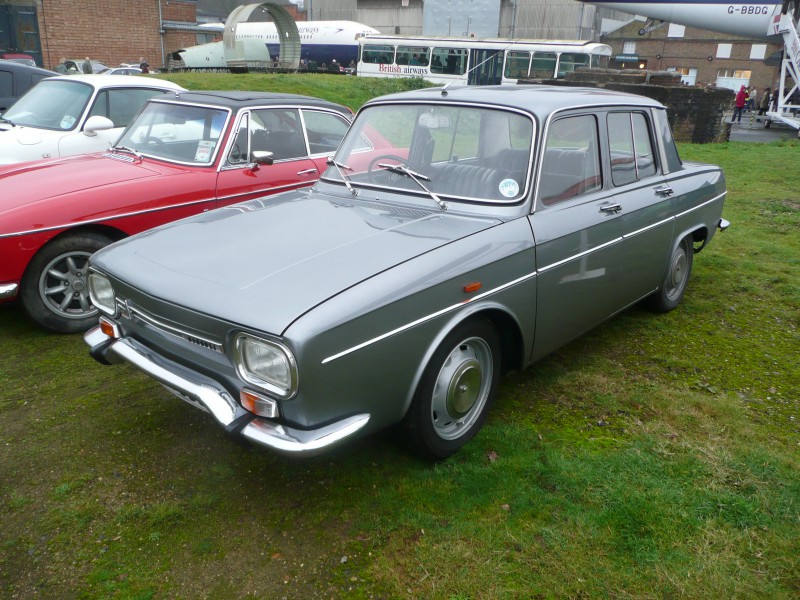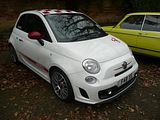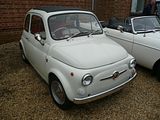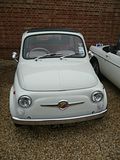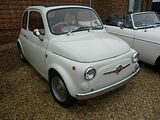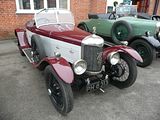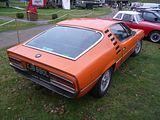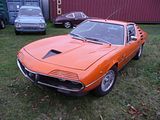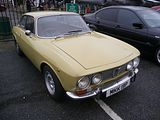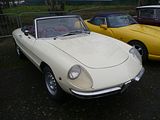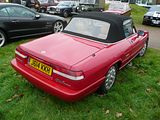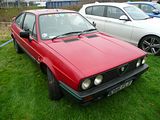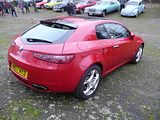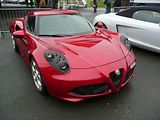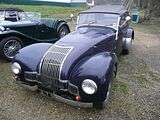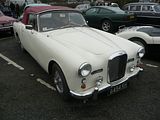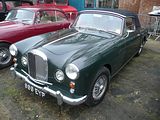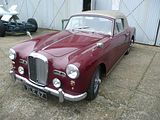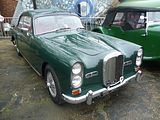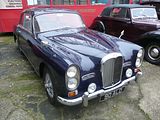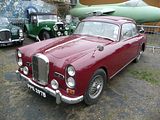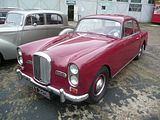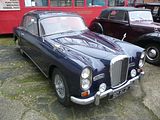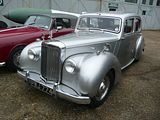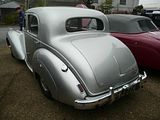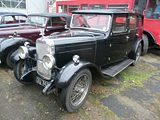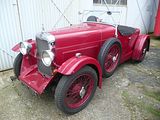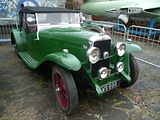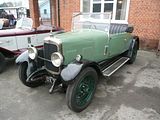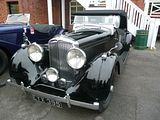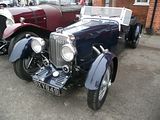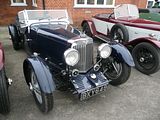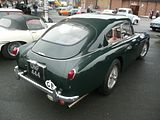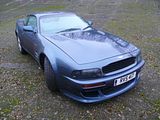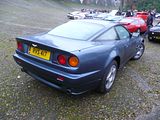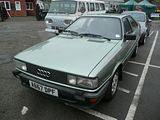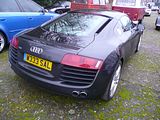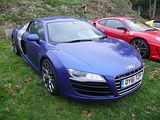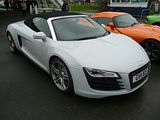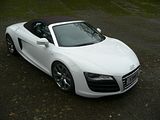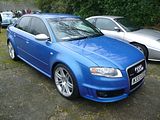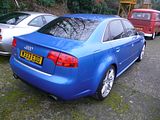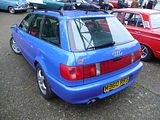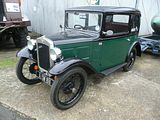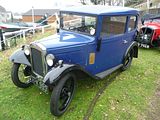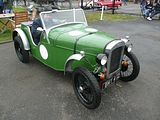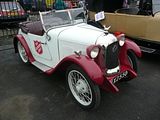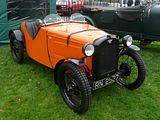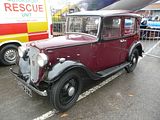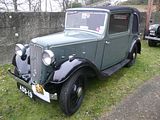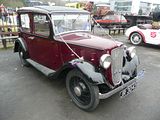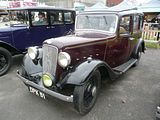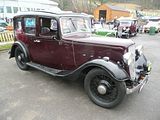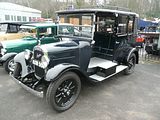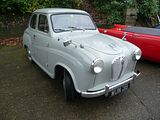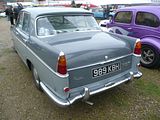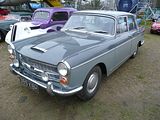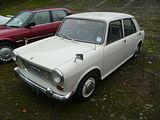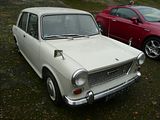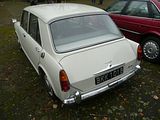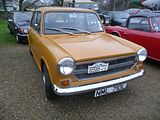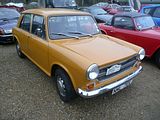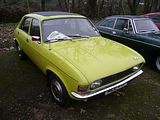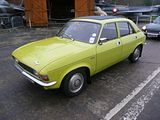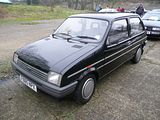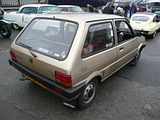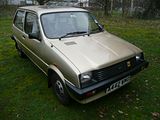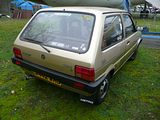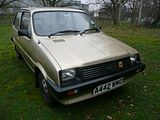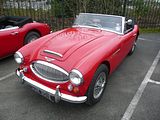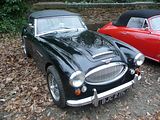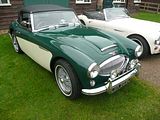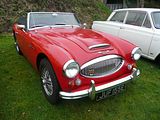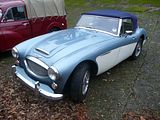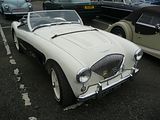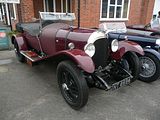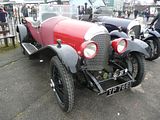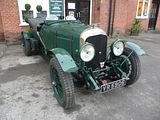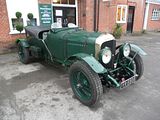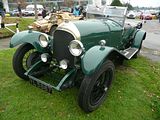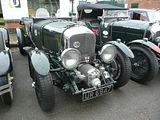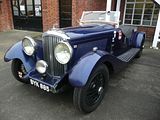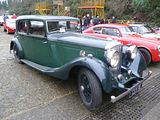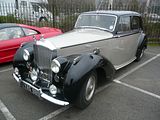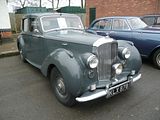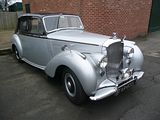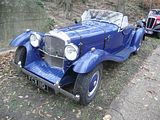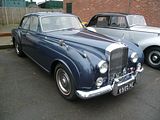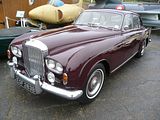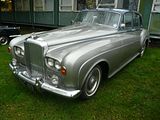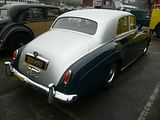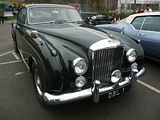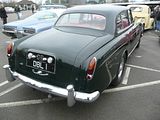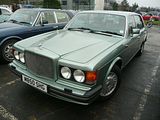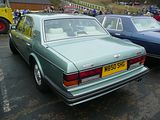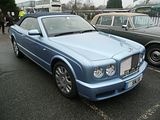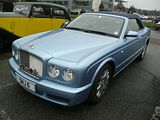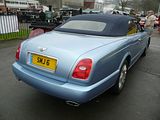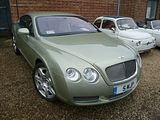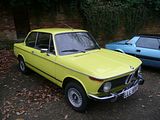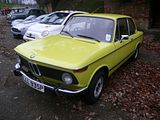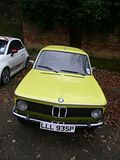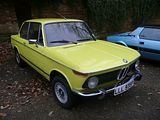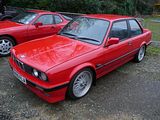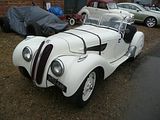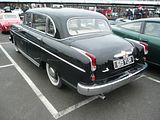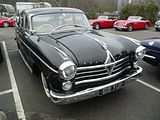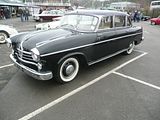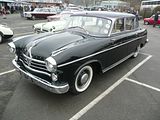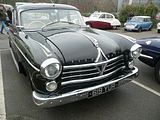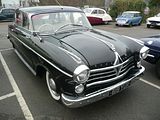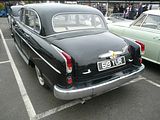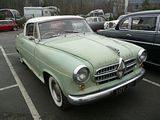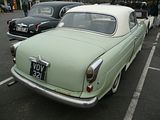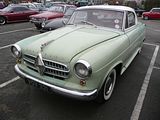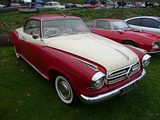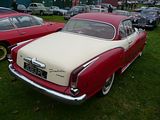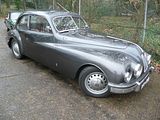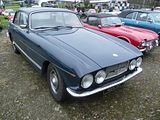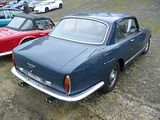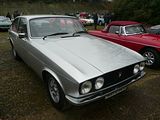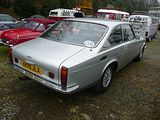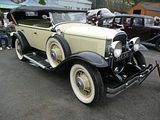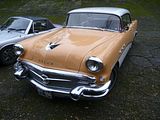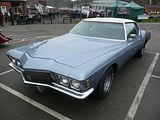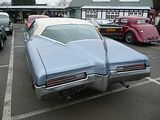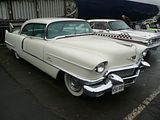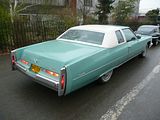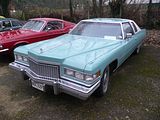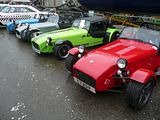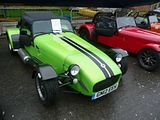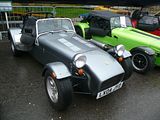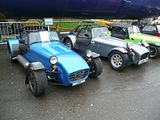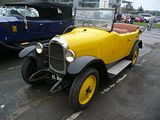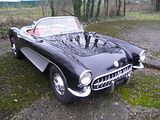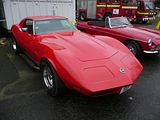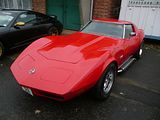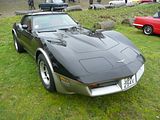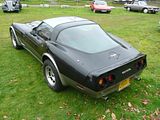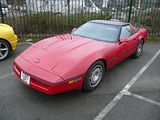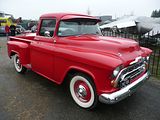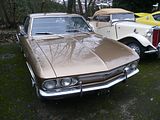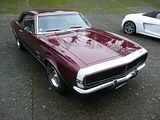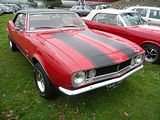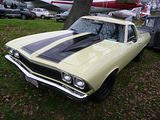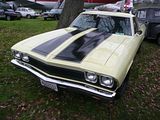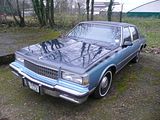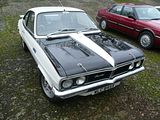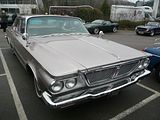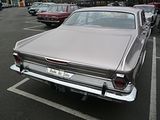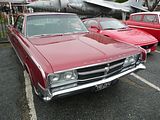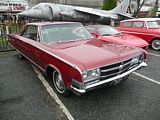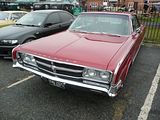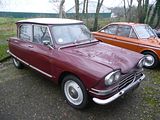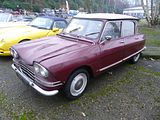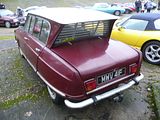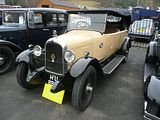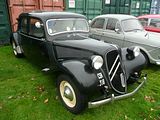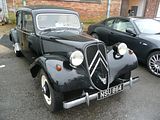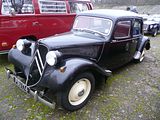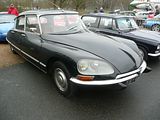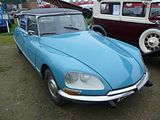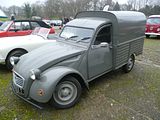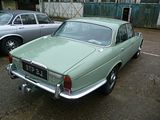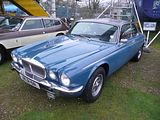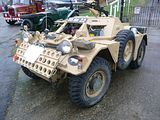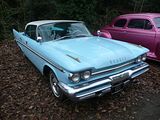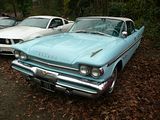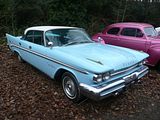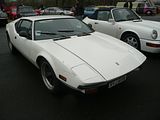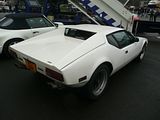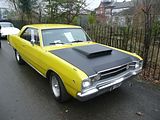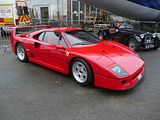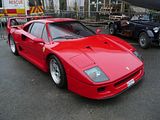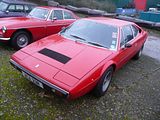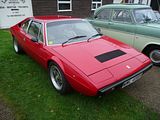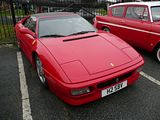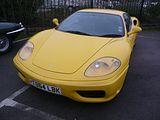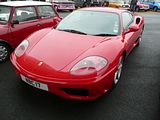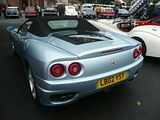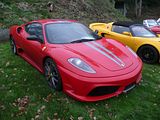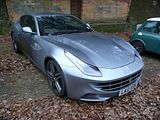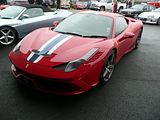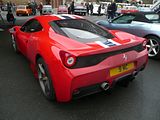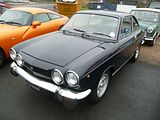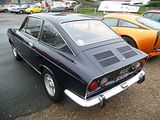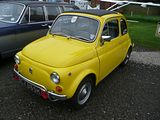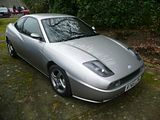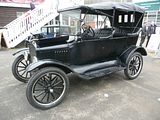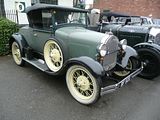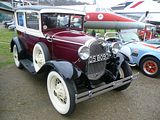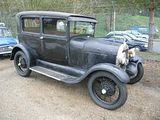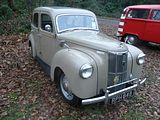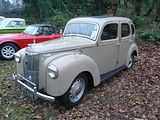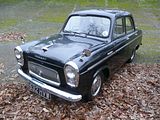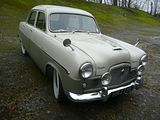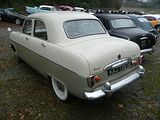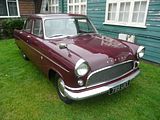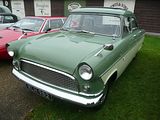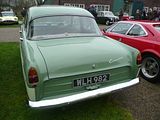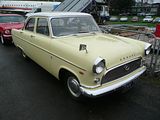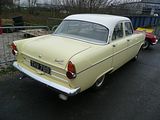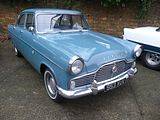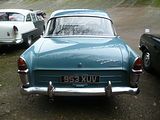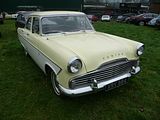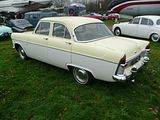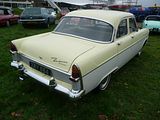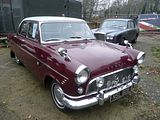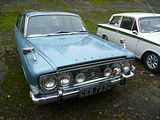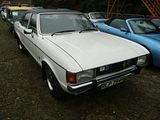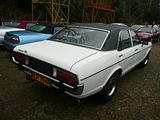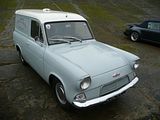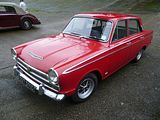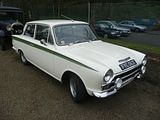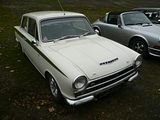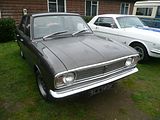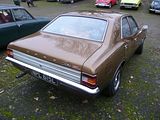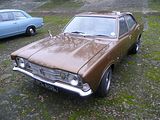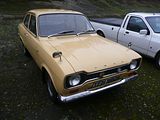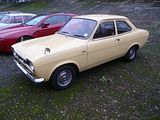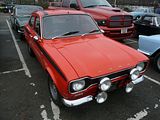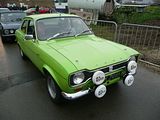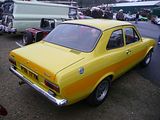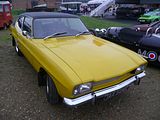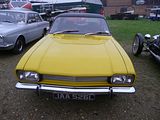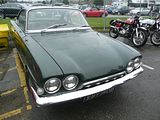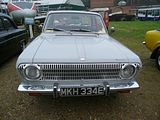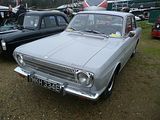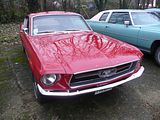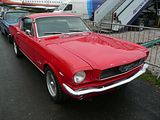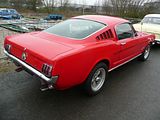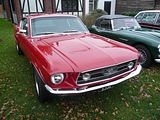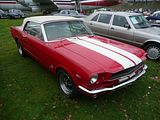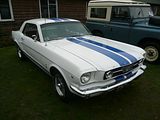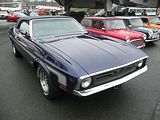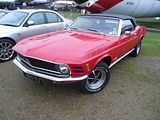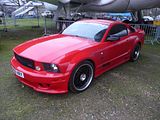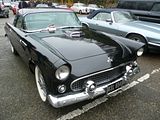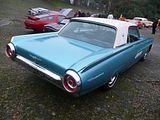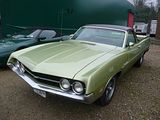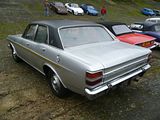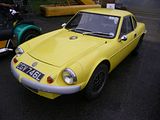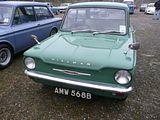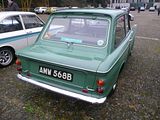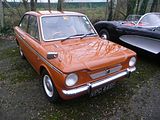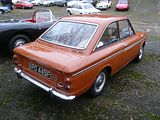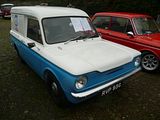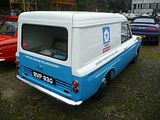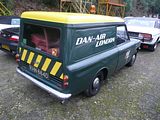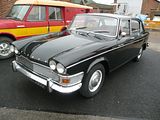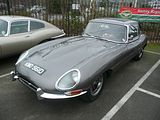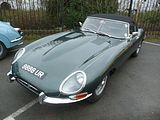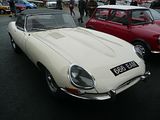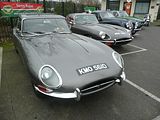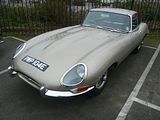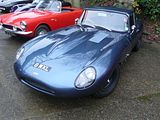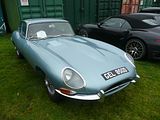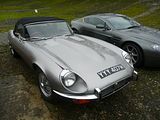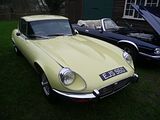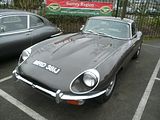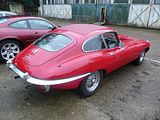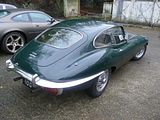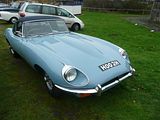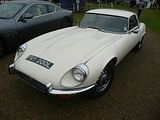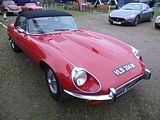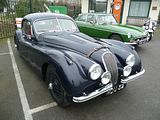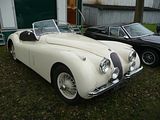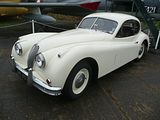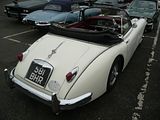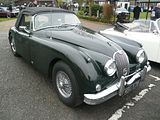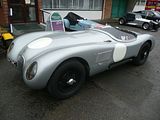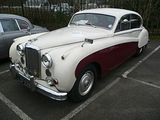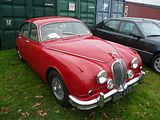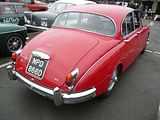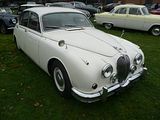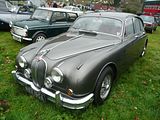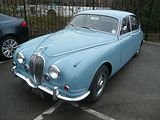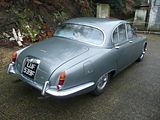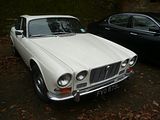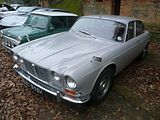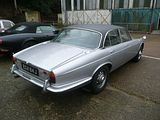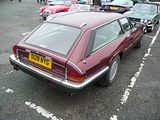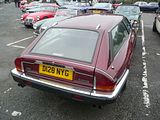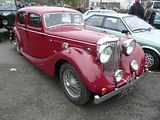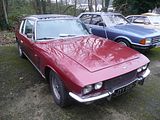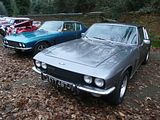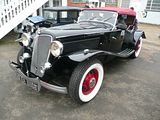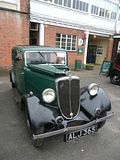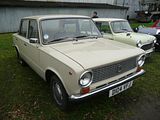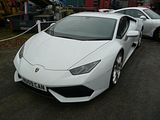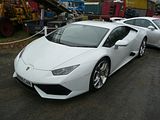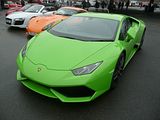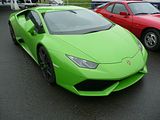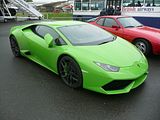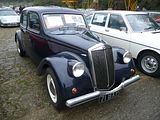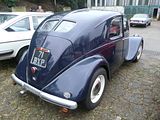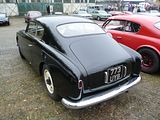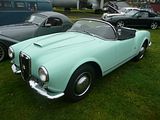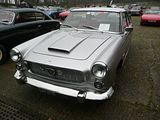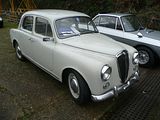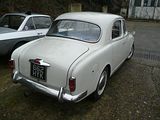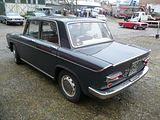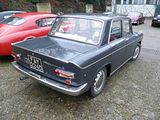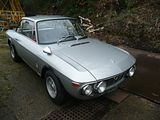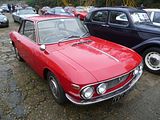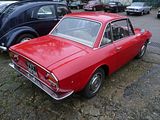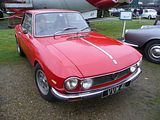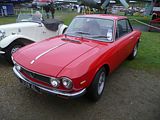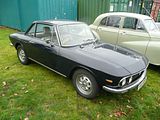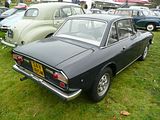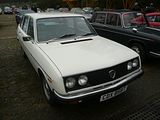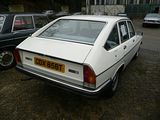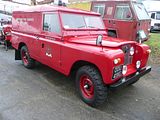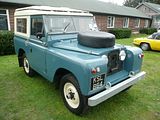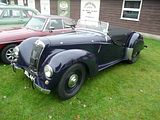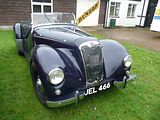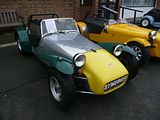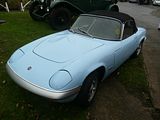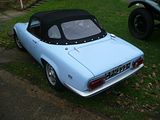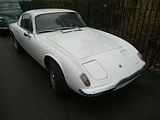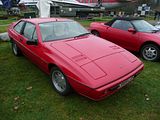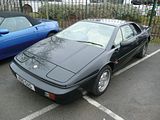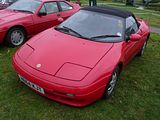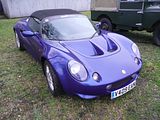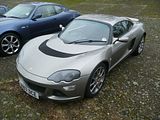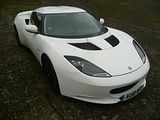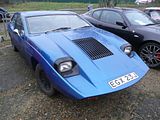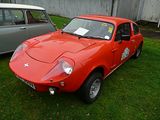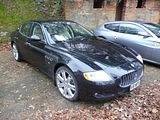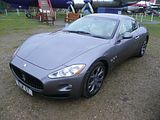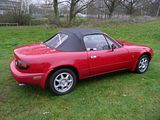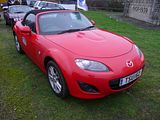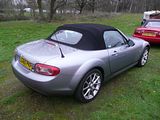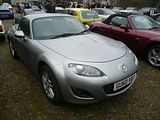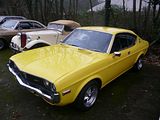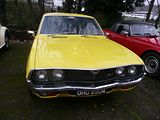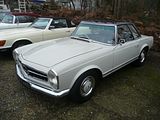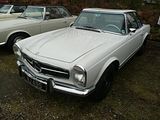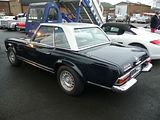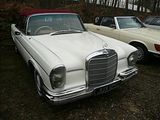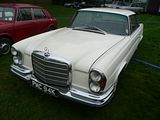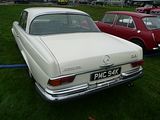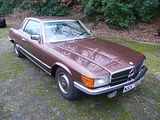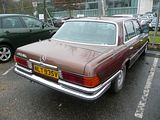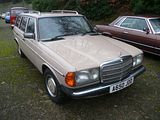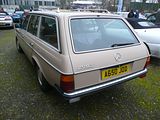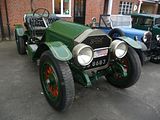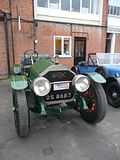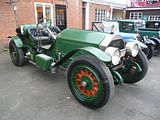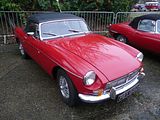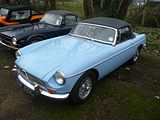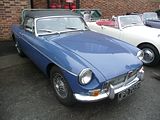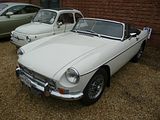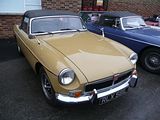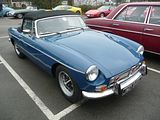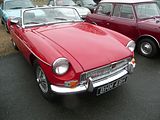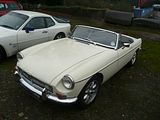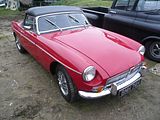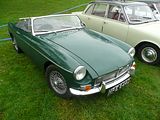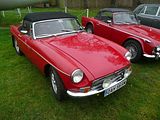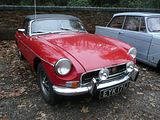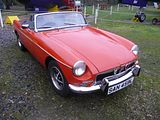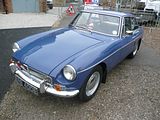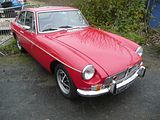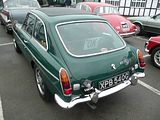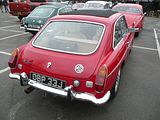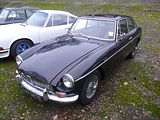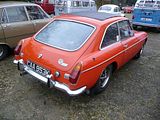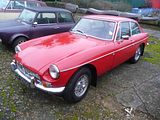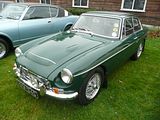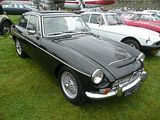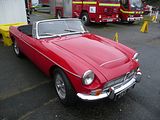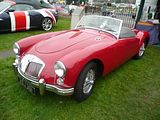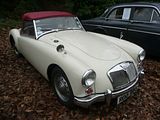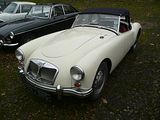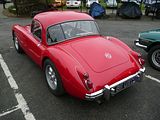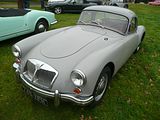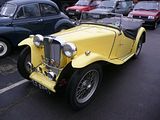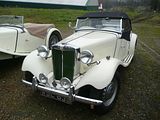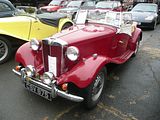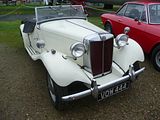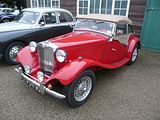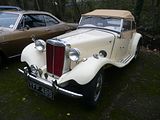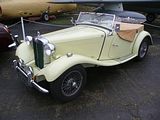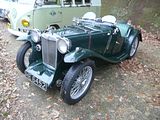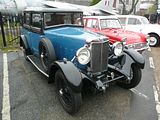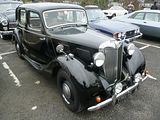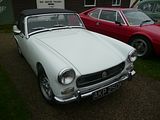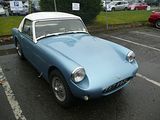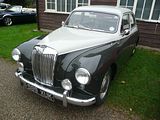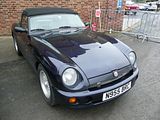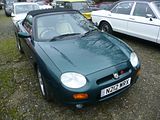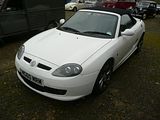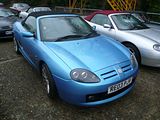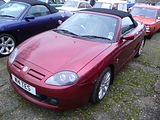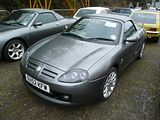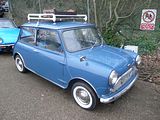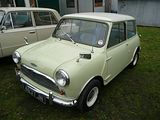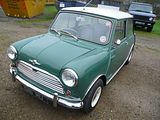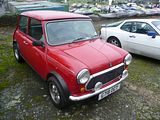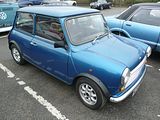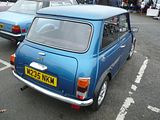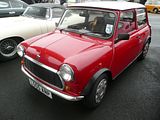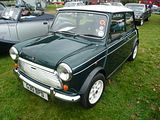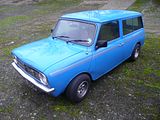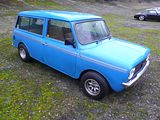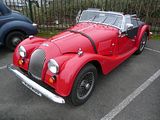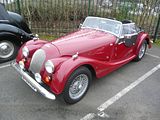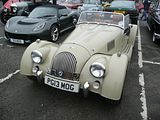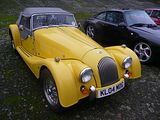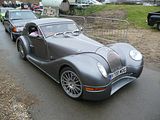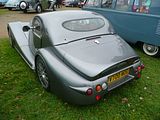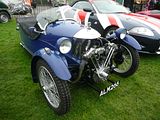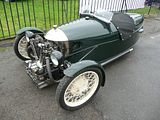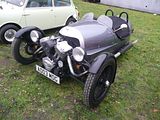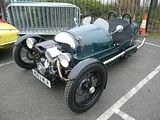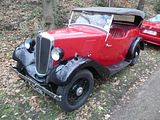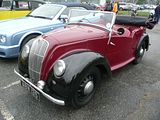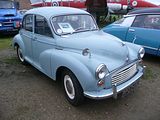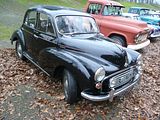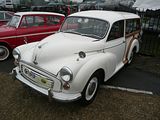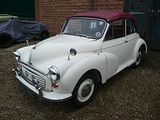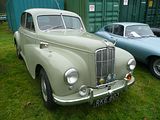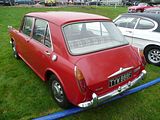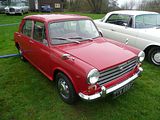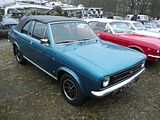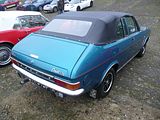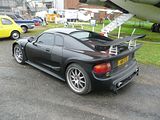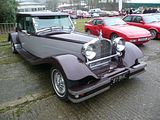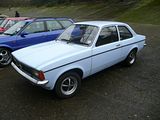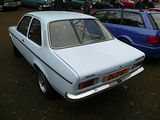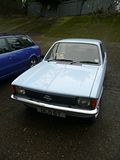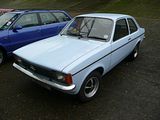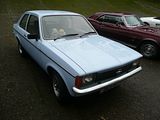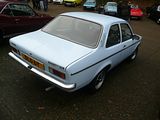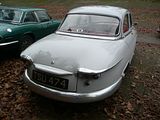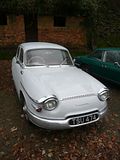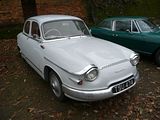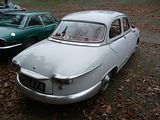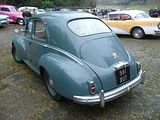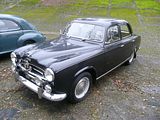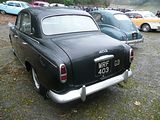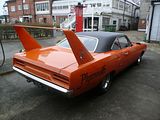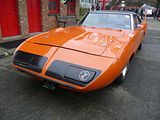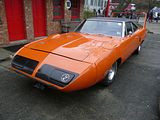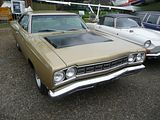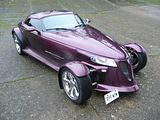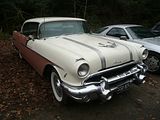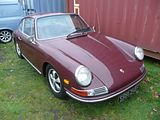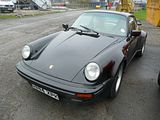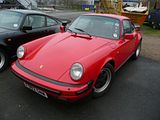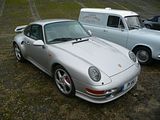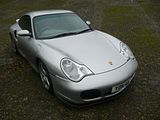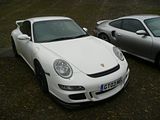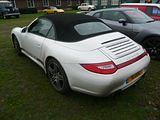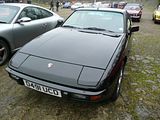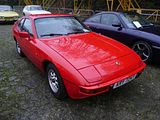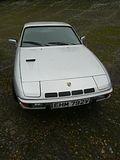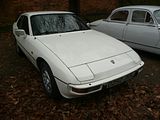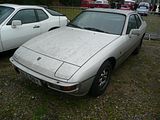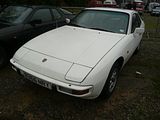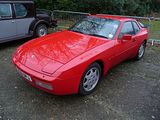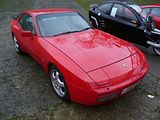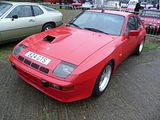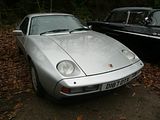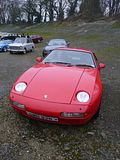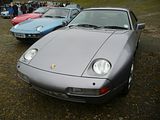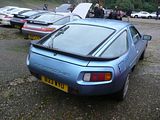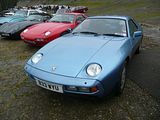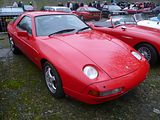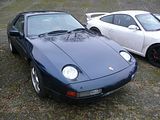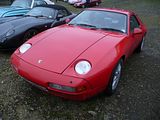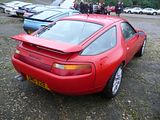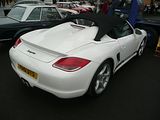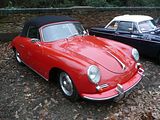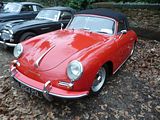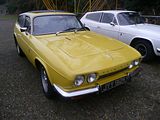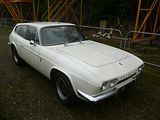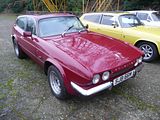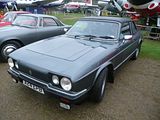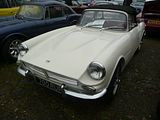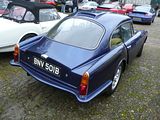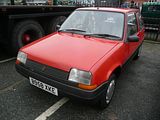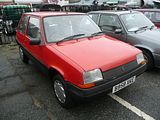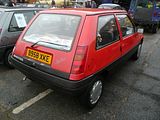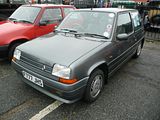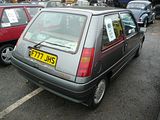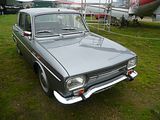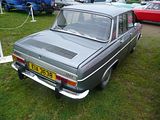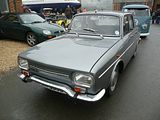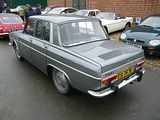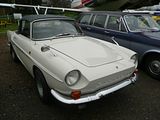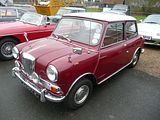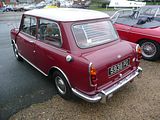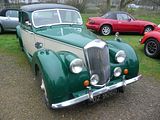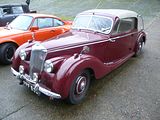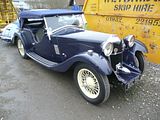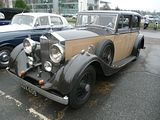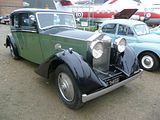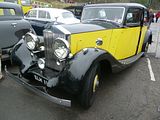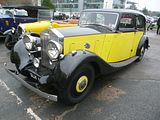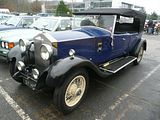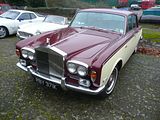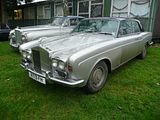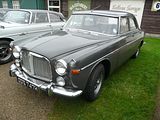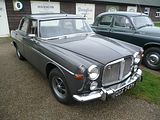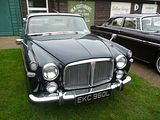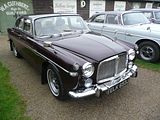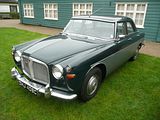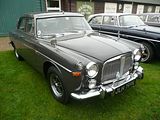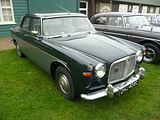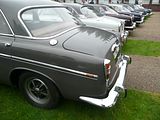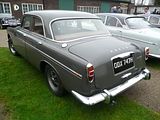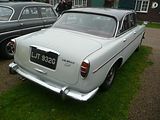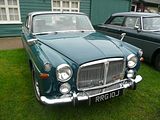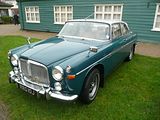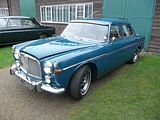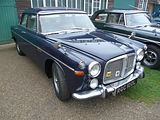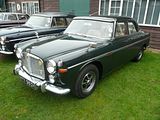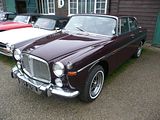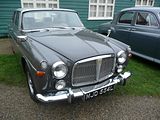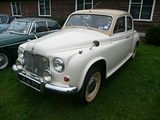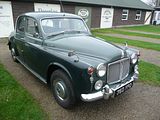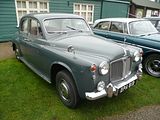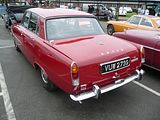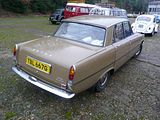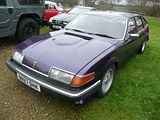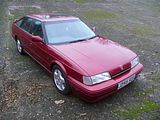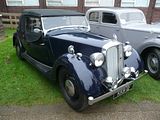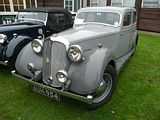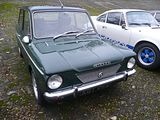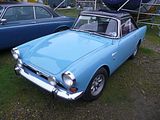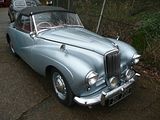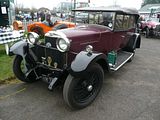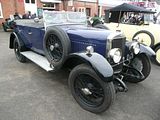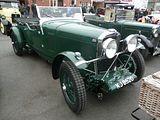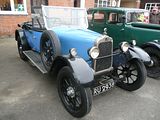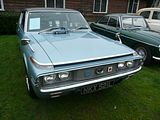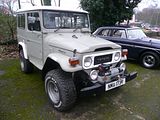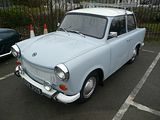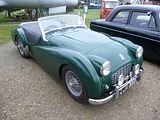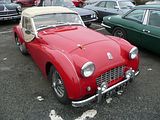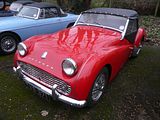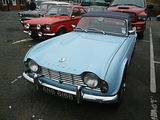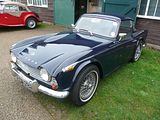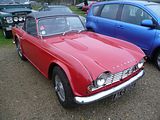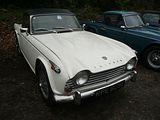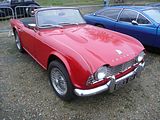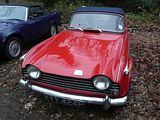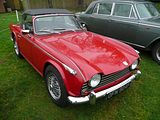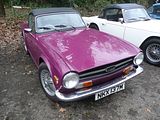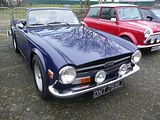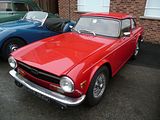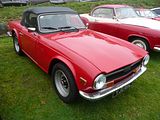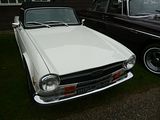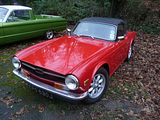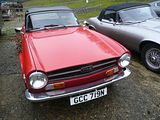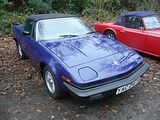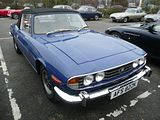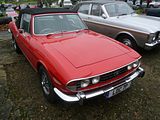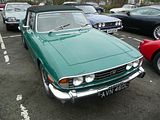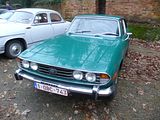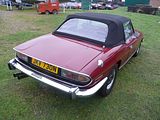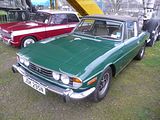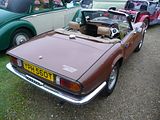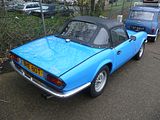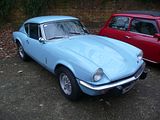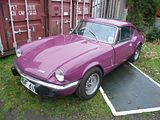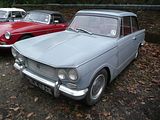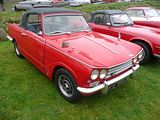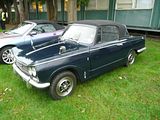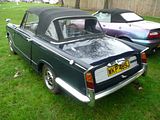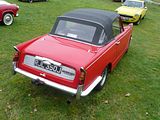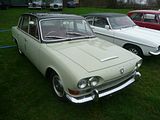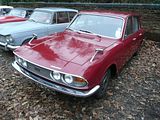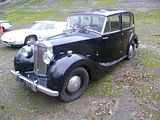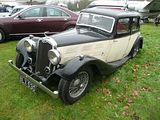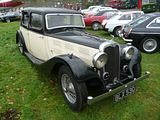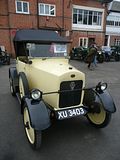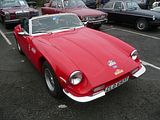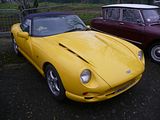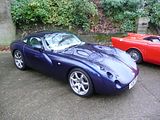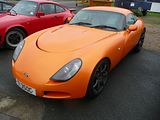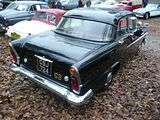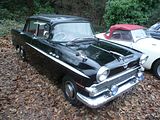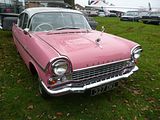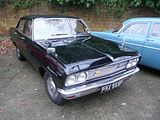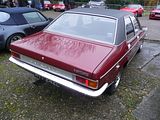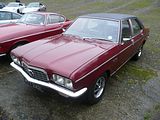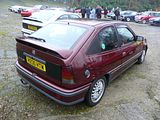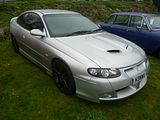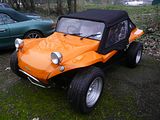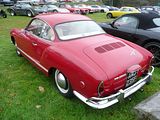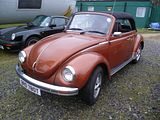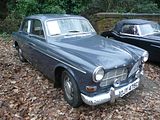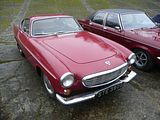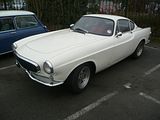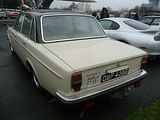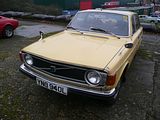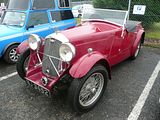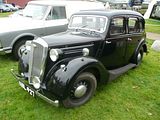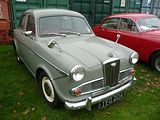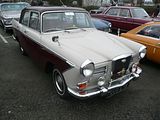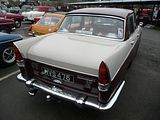Although the number of car-related events reduces dramatically in the winter months, a complete absence of them is clearly too much for many enthusiasts to bear, and so whilst there’s not much on the calendar, if you search diligently, you can still find gatherings of all sizes scattered around the country to fill those empty looking Sundays during the shortest days of the year. Among the most popular are the various New Year meets which take place on the 1st January, providing the opportunity for many to break away from a festive season hidden away indoors failing to resist the temptations of food, drink and trashy television. A couple of years ago, I attended the one nearest to me, at the Frog Mill, Andoversford, and when planning my New Years Day 2015, it was very tempting to head back there, as there had been a good gathering of cars. But I decided to travel, and head to the best known and biggest of them all, the Brooklands New Years Day Meet. I had read that this event frequently fills all the entire space on site, with a four figure total of cars, so I was optimistic that there would be plenty to see. The official opening time of the gates was published as 9am, and I arrived on site only a few minutes after this, and found that there were already several hundred cars parked up. All morning, a processions of interesting vehicles continued to arrive, and soon almost every single practical parking space was filled. Most of the cars were lone examples, but a number of Car Clubs had reserved space for a group display, something which I have noted for 2016. It was almost lunchtime before the first started to depart, and for a while, arrivals balanced out the departees, but by early afternoon, the display did start to empty out. With a camera battery threatening that it was about discharged, I finally left at around 2:30pm. Arriving home, and uploading the photos, I found that I had taken 764, and here they all are. Enjoy the variety!
ABARTH
One lone modern Abarth managed to sneak into the display. Although this one bore Abarthisti stickers in both side windows, I confess that I don’t actually know to whom it belongs.
There was an earlier car here, too, tucked away near the entrance to the Bus Museum was a 595 from the mid 1960s.
AC
Early AC cars such as this 1929 Acedes Six 2 seater Sports had a characteristic curved radiator grill not dissimilar to that on the contemporary Morris models.
ALFA ROMEO
There were not many Alfa present, but those which were here were particularly nice. Best of all, to my mind, was this fabulous bright orange Montreal. This V8 engined car languished for a long time, cruelly (but not entirely undeservedly) grouped together with equally desirable, but notoriously fickle and costly to fix delights, the Triumph Stag and Citroen SM, as one of the three wild cars of the apocalypse. Now people seem to have got over that, and I note that what was once a £20k car that was hard to sell is now likely to cost three times that.
Also lovely, and also on a value appreciation curve is this 105 series 2000 GTV.
There were also a number of 105 series Spiders, the long running open topped model that was produced from 1966 for almost 30 years.
Facelifts rarely improve the appearance of a model, but are applied either simply to emphasise to change or to fit in with fashion. In the 1980s, fashion largely meant black plastic grilles and black plastic bumpers, so it was perhaps no surprised that in 1983, Alfa added both of these to the stunningly pretty AlfaSud Sprint. Neither really suited the car, sadly.
Opinions vary on the styling aesthetics of the Brera. I find it very attractive from some angles – the best being the one depicted – but a bit oddly proportioned when seen from side on.
The latest Alfa is the 4C Competizione, and the launch edition cars have now all been dispatched to their owners, which means that there are a few dozen of this stunning looking car on our roads. This is one of them.
ALLARD
Sydney Allard built a series of cars with large and powerful engines (and generally rather gawky styling) in the late 1940s. Best known perhaps is the J2X, but there were plenty of others. This one is an M, which was built between 1947 and 1950. It is considered the first “civilised” sports car that Allard made, and around 500 were built. A two-door, four-seater convertible, it was marketed as a Drophead Coupé. It was powered by a Ford 3.6 litre (3622 cc) engine.
ALVIS
The Alvis Owners Club was one of those who had pre-booked space for a number of their cars. The sign by their reserved area said “10 cars”. but more than that turned up. Most numerous model was the last design produced, before the factory abandoned car production in 1967, the TD to TF Series. Offered in Coupe and Convertible styles, both were represented. These cars are not that well known, and that means that they are still relatively affordable – though the price for really nice TF Convertibles is heading towards six figures.
Precursor to this model was the TC, and there were several of these as well.
There were a handful of pre-war models present as well, such as this SA Silver Eagle.
A further couple of pre-war models were included in the display area in front of the Club House which was dedicated to cars from this era. They included a 12/50 as well as a Speed 20
ASTON MARTIN
From recent times was this V12 Vantage model
Much earlier from the Aston Martin catalogue was this 1934 International.
This early DB2 model was quite a late arrival at the event, but it certainly pulled the crowds and generated lots of expression of admiration.
Aston Martin presented their first all new design for over 20 years at the 1988 London Motor Show, the Virage. Opinions on the merits of Ken Greenley’s styling differed, but few who got behind the wheel could hide their disappointment that this car was really not good enough. Aston worked hard to improve matters, and also added the expected more powerful Vantage model, as well as some even faster versions over the coming years, all of which are viewed more favourably than those early cars.
AUDI
The urQuattro of 1980 is the Coupe model from Audi that everyone remembers, but whilst it gained all the headlines, it should not be forgotten that it was the regular Coupe that gathered far more sales. Offered initially with the 5 cylinder 2.1 litre engine out of the 100 Saloon, the range was soon extended with fuel injected and then 1.8 litre 4 cylinder cars, before a facelift in 1985 tidied up the styling, and added a Quattro option. You don’t see these cars very often, so this was a nice rarity for the day.
The R8 is one of those supercars which, nearly 8 years after its launch, still pulls a crowd, and who can wonder why. Striking looks in both Coupe and Spider form mean that you just know that this is something special.
Also rather special is the B7 model RS4, a car which made even the Audi-hating UK motoring press go weak at the knees. I’ve driven one, and it’s not hard to see why.
The first Audi to bear the RS name came more than 10 years earlier, the RS2 Avant. Jointly engineered with Porsche, and only offered in the Avant body style, this was quite a headline grabber in its day.
AUSTIN
Several examples of the little Seven were here, ranging from a late model Saloon to some of the sporting two seaters.
Next up in the range was the Ten, and this came in a number of different body styles, all with model names taking from the towns of England. Several different cars were displayed here.
Sitting up above the Ten were the Six cylinder models, which variously bore the name Six and Sixteen, the first referring to the number of cylinders and the second the old RAC hp rating. These were big heavy cars. I understand that my grandfather had one back in the 1930s and whilst very comfortable, it struggled with any hills (this was in relatively flat East Yorkshire!).
The Austin FX3 was London’s taxi cab right through to the end of the 1950s. Produced in significant quantity at the time, few have survived, and of course they are much in demand for film and tv productions that want to evoke that period feel.
This A40 Van is based on the saloon A40 Dorset that was produced from 1948 to 1952.
At a quick glance, you might think these two cars are the same. But they are not. The green one is an A70 Hereford, and it you look at the distance from the front wheel to the door, you will see it is longer, needed to accommodate the inline 6 cylinder engine, compared to the 1200cc 4 cylinder Somerset which is the grey-blue car. Who said that the current trend for producing a range of cars that look very similar is anything new?
The A40 name reappeared in the range in 1958 with the launch of this model, often known as the Farina, thanks to the fact that well known Italian styling house Pininfarina was responsible for the styling, the first of a series of models that they designed for BMC.
Sitting half a class below it in the range was the A35, a 1956 development of the 1952 A30, and a direct rival to Morris Minor.
Farina also styled the big Austins that first appeared in 1959 as the A99 Westminster. Later upgraded with a larger engine and some styling changes which included a lessening of the tail fins, the A110 model ran through to the mid 1960s, offering plenty of space and a lazy 6 cylinder engine to propel it at modest speed for a lot less money than most rivals of the day.
For most of the 1960s, the ADO16 was Britain’s best selling car. Sold with all of the BMC brand badges on the car, Austin and Morris were the volume sellers. There were examples of the Mark 1 and Mark 3 Austin 1100 and 1300 here, as well as a Morris 1100 Mark 2 (shown under the Morris heading).
This nicely presented Allegro 1300 Super was recently featured in Practical Classics. Owned by the Chairman of the Allegro Club International, it captures the seventies very well, with its Citron paintwork, and optional extra Webasto sun roof.
Two Metros to see. One was a late 1980s L model and the other a limited edition Gala from 1983. Howmanyleft.co.uk suggests that this could be the sole survivor.
AUSTIN HEALEY
The Big Healey is one of Britain’s more popular classics, so no surprise to find lots of examples of the 3000 and the earlier 100 models here.
BENTLEY
There were numerous examples of the early Bentleys here, with 3 and 4.5 litre models as well as at least one of the supercharged monsters. The idea of racing one of these, with its thing tyres and marginal brakes suggests that the legendary drivers swallowed the entire bottle of brave pills!
Following the acquisition of the marque by Rolls Royce in 1934, the focus shifted away from the big heavy race inspired machines to a new range of models designed for touring. They were called 3.5 and 4.5 litre, though these days generally referred to as the “Derby” cars, as that is where they were built. These cars were supplied as a chassis for the customer then to choose a body style. Many were bodied by Vanden Plas, but there is considerable variety in the cars that were produced. Of 2500 such cars made before the War, about 1500 still survive and many of them are very elegant indeed, and some of that variety was evident in the cars that were on show here.
The first post-war design from Crewe, the Mark VI, was also the first Bentley available with a factory body. Until this model came along, buyers had always acquired a chassis and sent it to their favourite coachbuilder, and whilst that was still an option, plenty were made with the standard body.
Sadly, the Pressed Steel bodies on these cars were of rather poor quality, and most of them rusted quite quickly, When they did, some were scrapped, but others gained a new lease of life with a replacement body being fitted, many of which were of the open tourer or sports type, creating a Bentley Special, like this one.
When the S Type came along in the mid 1950s, there was the choice of the standard factory body, one of which was here, in Series 3 guise, or if you opted for the more costly Continental versions, a coachbuilt alternative. Most of these were bodied by Mulliner ParkWard, as is the case with this one.
By the 1960s, Bentleys were little more than Rolls Royce models with a different grille and the Bentley badging on them. They sold in tiny quantities compared to the Rolls Royce, so are rare now. Shown here was a T Series Saloon and a late model Continental Coupe.
Following the launch of the Mulsanne Turbo in 1982, sales of Bentley took off, and during the 1980s, they overtook Rolls Royce for the first time. Bentley produced a series of different models lower down (it’s a relative term!) their range, such as this Brooklands as well as an Eight.
Rather more recent was this last generation Mulsanne based Brooklands Convertible.
It was with the launch of the slightly cheaper Continental series cars in 2003 that sales really took off, This is one of the first series Continental GT models.
BMW
Very few BMWs on show. Although the brand is very popular with new car buyers, it seems that it has failed to find much favour among the classic car fraternity. Whilst I understand that as sales volumes were small until the mid 1980s, so you are never going to see lots of older models, you’d have thought that what the Germans call “youngtimers” would be around in vast quantity, but it seems not. The two nicest examples on show were a late model 1502 and its spiritual successor of 15 years later, the E30 model 318iS.
Much older was this marvellous 328, the most sporting BMW model of the 1930s.
BORGWARD
This was the surprise of the day. It is a Borgward Pullman 2400, and it dates from 1957. The car had right hand drive, so I am guessing that it came to the UK when new. I will confess that although I am familiar with Borgward’s other offerings, this one was not a model I had ever heard of, let alone seen in the metal. Very imposing, with lots of space in the back, so definitely meriting the Pullman name, it had almost everyone stumped as to what it was. I heard many guess that it might be Russian.
Parked up alongside it was a rather used looking Isabella Coupe, and a smarter version of the model was to be found elsewhere on site.
BRISTOL
The Bristol 403 was produced between 1953 and 1955, the third of the eventual five series of Bristols powered by the BMW-derived pushrod straight-six engine. It replaced the Bristol 401 and 402 in 1953 and continued in production for two years. The 403 retained much the same styling as the 401, but featured many mechanical improvements compared to that model. The 1971 cc six-cylinder engine was modified through the use of bigger valves and larger main bearings with a diameter of 54 mm as against 51 mm on the 400 and 401, which increased the power output to 100 hp as against 85 hp in the 401. The acceleration was markedly improved: the 403 could reach 60 mph in 13.4 seconds as against 16.4 seconds for the 401. The 403 had a top speed of 104 mph. To cope with this increased power, an anti-roll bar was fitted on the front suspension and improved drum brakes known as “Alfins” (Aluminum finned) were fitted. Early models had them on all wheels, but Bristol thought the car was over-braked and they were thus restricted to the front wheels on later 403s. The 403 was the last Bristol to feature a BMW-style radiator grille. It is also noteworthy for having two extra headlamps at the side, almost pre-dating the adoption of the four-headlamp layout in larger cars (Bristol themselves adopted it with the 411 in the late 1960s).
The 411 ran from 1969 to 1976, and such is the constant appeal of these cars that Bristol will update yours with some modern convenience features, something which several owners are having done.
Successor to the 411 was the 603, a car which bore a strong resemblance to its predecessor at the front, but with a more fastback rear end. It was less well regarded than most other Bristols.
BUICK
1930 Model 40
I’ve seen this 1956 Buick Special before. Special was actually the base model in the range, yet another those cars were the name is something of an oxymoron (like the Corsa Merit, which had none, and the Enjoy, which was the last thing you would do with it, or the 309 Style, which whilst a decent enough car certainly lacked the attribute in its name). Of course, now, a period piece like this does seem rather special with its two tone paint and all sorts of details that would give legislators and accountants heart failure in equal measure.
The “boat tailed” Riviera was the first complete redesign of the car that was first launched in 1963. Looking very different from the first generation models, this one was launched in 1971.
CADILLAC
Cadillac styling in the 1950s was changed every year, which was common practice for all US manufacturers at the time. That did mean that some of the wilder styling crazes – and there were several during the decade – were very short lived. This 1954 Coupe de Ville had among the largest and pedestrian unfriendly front bumper overriders which were intended to evoke the jet era. There was also a mascot on the top of the grille which would give the safety legislators palpitations these days!
This 1976 Fleetwood Eldorado marked the turning point for Cadillacs. For years, the cars had been getting ever bigger, and with larger engines, culminating in am 8.2 litre V8 in this one. The 1977 models were notably smaller.
CARVER
Not often you see one of these unusual machines. Officially launched at the Geneva Motor Show on 7 March 2007, the first commercial Carver product, the Carver One, was designed to seat two people, and manufactured and distributed by Carver Europe (formerly named Vandenbrink) in the Netherlands. and assembled in Germany by ACÜ. Combining aspects of a motorcycle and a car, both in appearance and design. the Carver has three wheels and is said to have the comfort, controls and stability of a normal car while showing the dynamic cornering behaviour of a motorcycle. The dimensions are 11 ft long by 4.3 ft wide by 4.6 ft high, giving it a low slim profile, similar to a motorcycle. It weighs 640 kg (1,410 lb), about half the weight of a medium size car or three to four times the weight of most motorcycles. The unique property of the Carver One is its automatic balancing “Dynamic Vehicle Control” system, which is said to allow full stability under almost all circumstances. Thanks to this DVC technology its cornering behaviour is said to feel natural and pleasant even though it can tilt up to 45 degrees while turning. This is not based on how far the wheel is rotated, but on how much cornering force is applied to it.. The Carver has a 660 cc 4-cylinder 16-valve engine with a turbo intercooler giving a power output of 65 bhp at 7,500 rpm and a maximum torque of 74 lb·f) at 4,000 rpm. An option is available to upgrade the ECU to give 85 bhp output (this option was never released). The transmission is a 5-speed manual with reverse, and all wheels are equipped with ventilated disk brakes. The front wheel is slightly larger than the rear wheels (at 17″ to 15″). This is enough to give the Carver On a top speed of 115 mph and acceleration of 0–62 mph in 8.2 seconds, which is slow compared to most motorcycles and average for a passenger car. Despite some positive reviews, with particular eulogy coming from Jeremy Clarkson, sales were limited and in June 2009 Carver Europe declared bankruptcy due to lack of demand at its 30,000 euro price, and ceased commercial production and sales.
CATERHAM
There were two long lines of Caterham models, showing some of the subtly different versions that have been offered over the years, and with a couple of the original Lotus Seven models included in the display, you can see that although the details have changed quite a lot, the design is still recognisably very like Colin Chapman’s original 1960 car.
CHENARD et WALCKER
A little known French marque, this was definitely a car to identify by looking at the badge. Ernest Chenard (1861–1922) was a railway engineer and maker of bicycles with a factory in the rue de Normandie at Asnières-sur-Seine, then just outside Paris on its north side. He joined with mining engineer Henri Walcker (1877–1912) in 1898 to make motor tricycles. Together they founded their automobile business on 19 January 1899, with Chenard in charge of design and Walcker sales and finance. The business was formally registered as Chenard, Walcker et Compagnie in 1900. In order to ensure short-term commercial viability they started out producing a quadricycle, but in 1900 their “first true automobile”, the “Chenard et Walcker Type A” was homologated with the authorities. It had a two-cylinder, 1,160 cc engine of their own design which drove the rear wheels through a four-speed gearbox and an unusual transmission system. From the gearbox there were two drive shafts, one to each rear hub, with the hubs driven by gear teeth cut on the inside. The car was shown at the 1901 Paris Salon. The “Chenard et Walcker Type B” followed in 1901 and a fuller range was very soon on offer. In March 1906 the company went public, in the process being renamed as the Société Anonyme des Anciens Étabissements Chenard et Walcker, and moved to a new factory at Gennevilliers in 1908. The new name has caused confusion over the years as to whether the cars should be called Chenard-Walcker or Chenard et Walcker. Both names seem to have been used. Annual production steadily increased with a major market being the supply of taxis especially in Paris. In 1910 they made over 1500 cars making them the ninth largest car maker in France. A six-cylinder car of 4.5-litre joined the line up in 1913 and at the outbreak of war in 1914 the model range consisted of the six-cylinder and fours of 2.0-litre, 2.6-litre (and 3-litre capacities. During World War I Hispano-Suiza aircraft engines were made as well as military versions of the Type U car. When peace returned, only production of the six-cylinder, now called the Model UU, was resumed but in 1920 a brand new 2,648 cc four, the 12CV, was added. FAR commercial vehicles were also made. Following the death of Ernest Chenard in 1922, his son Lucien Chenard (1896–1971) took over. The 3-litre car of 1922, designed by Henri Toutée (1884–1943) who had been with the company since 1906, with overhead camshaft engine was the winner of the very first Le Mans 24 Hours Race, in 1923 driven by René Léonard and André Lagache, both engineers employed by Chenard et Walcker. A 2-litre version, the 10/12 was subsequently sold to the public. By 1925 Chenard et Walcker was the fourth largest car maker in France.In 1927 the company entered into a tripartite “consortium” with Delahaye and Rosengart, sharing designs and components. Unic were also offered a place in the consortium but declined the offer.The “entente” was advertised in 1929 with the slogan “L’Union fait la force” The arrangement lasted almost four years, until 1931, when Chenard et Walcker with the other partners.In a letter dated 13 June 1930 to Delahaye, the company’s president stated that it seemed quite impossible to continue the collaboration as it was then working, and the collaboration was formally dissolved at the end of September 1931, the fifteen intervening months having been used by the partners to configure their separate model ranges, although some “run-out” models from the period of the collaboration continued to appear after 1931.The company had never had sufficient capital to modernise and the cars remained largely hand built leaving them unable to compete on price. As a result they went bankrupt in 1936.
CHEVROLET
There were examples of the C1, C3 and C4 generations of Chevrolet’s legendary Corvette sports car.
Among classic Chevrolets, few are prized more than the 1957 cars, which enthusiasts feel were the most desirable of the three year of the Tri-Star range. It is the top spec Bel Air models which are most sought after, especially in Coupe and Convertible guise., This is a 4 door Sedan – still nice, but not quite as valuable.
This Pickup dates from around the same time.
This is a Corvair Monza Coupe. After the savaging that the early Corvair saloons received, thanks to their rear swing axle suspension and tail happy oversteer handling that could land even a careful driver in big trouble that was the object of safety campaigner Ralph Nader’s wrath in his book “Unsafe at any Speed”, Chevrolet revised the car, and second generation Corvairs, as well as sporting revised styling became almost an enthusiast’s car with far more predictable handling, though the steering is apparently vague. It has a 2.7 litre six cylinder air-cooled engine, generating 140 bhp, to make it go. There aren’t many of them in the UK, so I suspect that this particular car may belong to well known journalist Richard Bremner, though I did not see him wandering around the event.
Chevrolet introduced the Camaro in 1967, as a direct riposte to the Ford Mustang, and the two have been dread rivals ever since, with people favouring one over the other much like they adopt a sports team. I’ve always liked the early Camaro models, of which there were a couple of examples present. One came complete with the shuttered front headlights that were only a feature in the first couple of year’s production and the second was from 1969, where the headlights were permanently exposed.
Chevrolet’s car derived pickup was called El Camino and by the late 1960s it was based on the Chevelle. This one dates from 1970.
Believe it or not, this Caprice Classic was a down-sized model compared to its predecessor. Still a vast car, by European standards, this model was produced from 1977 to 1990, and sat at the top of the Chevrolet range.
Sharing a body shell with the better known Vauxhall Firenza, a small number of models were built in South Africa. Intended for racing, they bore Chevrolet badges and a small number of them had engines from the Camaro Z28, which gave them a sound track to match what you might hope for from such a configuration. This was one of the least subtle sounding cars at the event.
CHRYSLER
One of the larger cars present was this, a vast New Yorker Sedan from 1964.
Just a year later, and slightly lower down the Chrysler range was this Newport. Still a large machine externally, though none too roomy inside.
CITROEN
Rarest of the Citroens present was this Ami 6. It did not look quite right, with the twin round headlights, and some of the other detailing was also not quite how these cars usually look, but otherwise this was a splendid reminder of LeFebvre’s rather unusual 1961 design, that even Citroen must have thought was too radical, as the Ami 8 that followed toned down some of the more bizarre details.
Much older than that was this 1924 model.
There were also a number of the iconic Traction Avant models.
Also present were examples of the DS, Citroen’s fabulous trend-setter that will celebrate its 60th birthday in 2015.
Never a common sight in the UK, unlike their native France, where they were widely used by small traders, was the 2CV Van.
DAIMLER
Following the acquisition of the Daimler company by Jaguar in 1960, it was not long before the new owner starting putting the Daimler badge on their products. One of the first to receive this treatment was the Mark 2 saloon, though to differentiate the Daimler offering, it had the 2,5 litre V8 unit that had been developed for the SP250 “Dart” sports cars. The first cars only came with an automatic gearbox, but a manual was eventually an option.
By the time that Daimler launched this version of the Sovereign, it was little more than a Jaguar XJ6 with the traditional Daimler fluted radiator grille and a few other minor trim changes. It sold in far smaller volumes than the Jaguar versions, though, making this a rare car now.
Series 2 models followed in 1973, including a very elegant Coupe, though it was 1975 before the cars entered production. They had a short life, only being made for 2 years.
One of the more unusual vehicles on show was this Daimler Scout Car. I had assumed that it would have been trailered in, but no, I saw it being driven off. Visibility appeared to be somewhat limited, so I hope the driver was not going far in traffic.
DE SOTO
One of Virgil Exner’s landmark designs, this is a 1957 De Soto Fireflite. It was the 1957 cars that so troubled Bill Mitchell, styling chief at GM at the time, that when he saw them pre-launch, he went back to his office and ordered a complete redesign of the models that his team were working on.
DE TOMASO
Always good to see a Pantera, and even better to see one of the now rare (in the UK) early cars, before Tom Tjaarda’s elegant styling was somewhat compromised by the much wider wings and spoilers everywhere.
DODGE
The Dart was the smallest model in the Dodge range during the 1960s. This was the era of the muscle car, when all the US manufacturers put upgraded, larger and more potent engines in their cars making them fast in a straight line, though not necessarily anything less than scary around bends or if you needed to brake sharply.
FERRARI
Most desirable Ferrari of the day in the opinion of many, me included, was this fantastic F40 which arrived mid-morning, and was given a very prominent parking place.
One of the prettiest Ferrari models ever made, in the opinion of many, is the Dino 246 GT and there was a nice example of that here.
The Dino 308 GT4 has long been in the doldrums, on that short list of Ferrari models that few appreciate, but recently, its virtues have been discovered and the car is gaining popularity (and value).
The same is true for the 348 models, a ts and a Spider version of which were here, as well as the later, and loved from the day it was new. F355 GTS
More recent (and far more common, as a lot of them were made) were the 360 Modena Coupe and Spider and their successor, the F430
From the current range were this FF and a California
Bringing things right up to date was a 458 Speciale
FIAT
There were very few Fiats here, either. My favourite was this lovely 850 Coupe. Once quite a popular car, especially with women drivers, who liked its style and the fact that it was easy to drive, most of them rusted away a long time ago.
The Nuova 500 is a popular and affordable (though prices are higher than you might expect for a once cheap car) classic, so nor surprise that as well as the Abarth version depicted earlier in this report, there were regular Fiat models as well.
Attracting plenty of attention, at least whenever I walked past it, was this X1/9.
Most modern Fiat in the display was an example of what many (me included) consider to be Chris Bangle’s finest design, the striking Fiat Coupe.
FORD
Oldest Ford present was this Model T. Legend has it that you could only have your T in black, and this was indeed true for a while, but that was largely a decision taken as the black paint dried more quickly than other colours. The early cars had a nicely shaped radiator grille which was changed to something that was simpler and quicker to make. Both these changes were evident on this car.
Replacing the T was the Model A, which was announced in 1927 and produced for 5 years. A far more modern car than than its long lived predecessor, it was offered with a vast array of different body styles as evidenced by the examples shown here.
Post war Fords looked not unlike the pre-war models, unsurprisingly. Ford UK had three basic designs, the elderly Popular, the larger Pilot and the small cars which comprised Anglia and Prefect. the last was a four door car with slightly better trim.
A new range of small cars was launched in 1953. Carrying over the same model names, of Anglia for the 2 door and Prefect for the 4 door, these looked far more modern than their predecessors. Cheap to buy and cheaply built, these were not designed for a long life, with engines intended only to last 40,000 miles or so, so it is quite remarkable that so many are still around and on show at most major events in the UK. This is a Prefect.
Preceding these were the Consul and Zephyr models which appeared in 1950. Visually similar, the Zephyr had a longer front end to accommodate the in-line 6 cylinder engine, and this is an example of that version of the model.
Ford launched Mark 2 versions of their large cars, by now the Consul, Zephyr and Zodiac in 1956, and then produced them for 6 years. There were several examples of the model type here.
The Mark 3 models came in 1962 and had a 4 year life. Instead of a Consul, the Zephyr was split into the Zephyr 4 and Zephyr 6, with the top spec Zodiac being joined by an even more luxurious Executive model in 1965. This is the flash Zodiac model.
The Mark 4 arrived in 1966, once again offered as Zephyr 4 and 6, Zodiac and Executive. Produced for 6 years, these cars had a very long front and short tail which made the styling look a bit unbalanced from some angles, Sadly that word applied to the driving dynamics, too, but they were roomy cars that had plenty of appeal. If the standard car was not spacious enough, then coachbuilder Coleman Milne would build you an even bigger one, with cars like the Dorchester and the Grosvenor, which had longer wheelbases to accommodate an extra row of seats. Very few of these have survived so this was a real rarity.
In 1972, the Z car names were consigned to history and Ford introduced a new executive car that was the same for Germany (where 6 cylinder Taunus models had topped the range) as the UK. Enter the Consul and Granada. A program of constant evolution kept these cars fresh during their 5 year life. In 1974, Ford applied the Ghia badge to luxurious top of the range models – both Saloon and Coupe – and anyone who had one of these cars really did show everyone that they had made it in corporate life. Few Mark 1 models have survived, many meeting their end on the banger racing circuit, so it was good to see this one.
With an F plate on it, this red car is one of the last Anglia 105E models made before the entry level Ford gave way to the Escort, launched at the start of 1968. There were some other examples of the model as well, including a rare survivor of the Thames Van.
More than 30 years since production ceased, the Cortina still generates lots of affection, and whenever you see one parked up, it is not long before you hear someone nearby saying that they owned one, or their dad had one, or some other reminiscence. There were four distinct models produced over a 20 year period, and there were examples of all four generations here. A first generation GT and Lotus were joined by a Mark 2 Super, a Mark 3 XL in very period Tawny Brown and there was a rather tatty Mark IV which did not make the photos, but which can be seen in the background of a couple of other shots.
Although only a very small percentage of all the Mark 1 Escorts that were sold between 1968 and 1975 were the special sporting ones, these are the cars that are most often seen these days. Not all are genuine, as quite a few have been created from shells of the regular cars. It was good to see a mix of models here, with one of those regular 1300XL models joined by a couple of Mexico versions.
As people’s disposable income increased throughout the late 1960s, Ford spotted an opportunity in the market, to sell “the car that you always promised yourself”, a stylish sports coupe that traded a bit in the way of practicality for styling that was a cut above the boxy family saloons that sat on most peoples’ driveways, affordable because underneath it was effectively a Ford Cortina. A bewildering array of engine choices, trim levels and option packs gave customers the opportunity to personalise their Capri. Everyone lusted after the 3 litre models, but the reality is that it was the 1300 and 1600cc models that sold in quantity. Shown here were a 1600XL and an example of the car after a mild facelift was applied in 1973.
The Capri name had been used before, on a coupe version of the short-lived Consul Classic. Notable for a massive boot, this car ran from late 1961 to 1964.
Throughout the 1950s and 1960s, Ford Germany produced their own range of cars, completely different from the UK models, and although they were not sold in Britain, in other markets they competed head on. All were branded Taunus. Entry level model was the 12M, which had been developed under the codename Cardinal, which led to Ford UK calling their rival Archbishop when it was under development. The two cars were very different. The UK model emerged as the conventionally engineered Cortina, was the German one was front wheel drive, and known as Taunus 12M.
2014 was definitely a Mustang year, with the 50th anniversary celebrations proving that there are a surprising number of Ford’s much loved car in the UK, even though it has never been officially sold here. There were a good number of them at this event, mostly the first generation models, but with plenty of variety to show how the car evolved from the particularly elegant looking models of April 1964 through a series of facelifts into the 1970s.
Continuing the US Ford theme were this pair of Thunderbirds, examples of the first (1955) and second (1961) model styles.
The Ranchero was a car-derived pickup, sharing much with the mid-sized Ford offerings of the day. Early models were based on the Falcon, but by the time that this 1970 model was produced, it was the Torino that provided the starting point for the vehicle.
This is an Australian Ford, a Fairmont from the early 1970s. A small number of these were sold in the UK. The fact that they were available in right hand drive removed one of the objections that prospective buyers of large engined Fords made in America found too hard to accept.
GINETTA
The G15 was launched in 1967. An good looking two-seater coupé, it had a glass fibre body bolted to a tube chassis with a rear mounted 875cc Imp engine, and it used Imp rear and Triumph front suspension. Over 800 were made up to 1974 and the car was fully type approved allowing, for the first time, complete Ginetta cars to be sold. Eight G15s were engineered for Volkswagen engines and called the “Super S”.
HILLMAN
There was a strong showing of Imp models, with this one being a very early example.
A Coupe model was added to the range for a short time, and there was one of these present, the Imp Californian, along with a nice duo of restored Van models, both in period livery.
HUMBER
Until 1967, Humber offered a range of cars that were larger than those of the other marques in the Rootes Group, with the core of the range being the Hawk and the more potent six cylinder Super Snipe. The last model design first appeared in 1956, and the cars were steadily refined on an almost annual basis until the range was deleted in 1967. This is one of the last Super Snipes.
JAGUAR
No surprise to see a lot of E Types here. This car still impresses everyone, more than 50 years since its March 1961 launch at the Geneva Show. There was a good mix of the three distinct Series that were offered, and open topped Roadsters as well as the close Coupe models.
Also present in some quantity were its predecessor, the XK family of XK120, XK140 and XK150.
The C Type was designed for racing, “C” standing for “competition”, and it was an effective machine in that regard. A surprising number of these cars were built in the early 1950s, and a lot more have since been created by the likes of Suffolk, often difficult to distinguish from the real thing.
During the 1950s, Jaguar had a car looking like this which went from Mark VII to Mark IX, each numerical increment representing a number of detailed changes. The Mark IX is identified by having a one piece windscreen.
When Jaguar introduced the 2.4 Saloon in 1955, many saw it as something of a gamble, as this was a smaller and cheaper Jaguar than there had been since the early days of the Austin Seven based Swallow Sidecars. But it paid off, especially after more powerful engines had been added, and the facelift creating the much loved Mark 2 was born, in 1959. This was a car that people aspired to – sadly that meant the criminal fraternity took rather a liking to them as well, and with minimal security protection, they were easily nicked. The police responded by buying some cars for themselves so at least they could give chase on an equal footing! There were several Mark 2s present, as well one of the late model 240s, a cheaper version of the car introduced in 1967 as a last hurrah until the XJ6 was announced and fully in production.
The S Type was introduced in 1963. Slightly larger than the Mark 2, which it resembles quite closely, this car was intended to fill the gap between that smaller car and the gargantuan Mark X.
With a similar front end to the S Type, the 420 model is easy to tell apart when you see it from the back, as it has a much longer tail.
In 1968, Jaguar replaced their entire saloon car range with the XJ6, and stunned the world with what was not just an elegant design, but a truly great car. There were a couple of examples of the Series 1 present, and a later and supremely elegant XJC Coupe model.
Lynx Engineering, formerly better known for producing replica D Type models converted a small number of XJS models into this very elegant Eventer model in the mid 1980s. It is believed that 67 Eventers were created. There would have been 1 or 2 prototypes though it is not clear whether they are included in the figure of 67. Of these, 52 are pre facelift cars and 15 are post, and there are 18 LHD and 49 RHD. 3 Eventers had the 3.6 litre engine, 2 with a manual gearbox and 1 automatic, there were 2 or 3 XJR-S, 1 4.0 litre AJ6 engined car, all others being V12 HE models. The first was shown as early as late 1982 whilst the last was not produced until 2002.
From the pre-war era came this lovely looking 1938 1,5 litre saloon. Looking not unlike the Bentleys of the era, this was far more affordable, a tradition that exemplified Jaguar until relatively recently, where “grace, space and pace” were available money that made you wonder how Sir William Lyons’ outfit could do it and make a profit.
JENSEN
There were a number of the elegant Interceptor models present.
Far less well known are pre war Jensens. This one is a 1935 Ford Sports Tourer. It is basically a ’35 Ford powered chassis that the Jensen brothers lowered, tweaked and fitted a body of their own design to. It is believed to be the first Jensen production car and possibly a prototype. It is the oldest Jensen extant, (not including rebodied MGs etc. which was their first work), and it is the last surviving ’35 Sport Tourer.
JOWETT
An example of this Bradford maker’s products from the 1930s, a 1933 Kestrel Saloon.
LADA
Once a common sight on our roads, in the late 1990s, almost all the remaining Lada models were re-imported back to Russia, being converted to left hand drive on the boat whilst in transit, so you don’t see these cars, once objects of derision, very often. This is one of the pre-Riva 2101 type models.
LAMBORGHINI
Two Lamborghini models here, both of them the new Huracan. This car is clearly still not well known as more than one person standing by them when I was taking photos asked what it was (there is no model badge on it), as they were all sure it was too smal to be an Aventador (true!). No doubt it will in time become better known and a more common sight on our roads as proved to be the case with its predecessor, the Gallardo.
LANCIA
The Lancia Motor Club was another of the Clubs with an official presence and a blocked out parking area. There was plenty of variety in the cars on show, and all of them were splendid. Hard to know which was my favourite. Oldest was a pre-war Aprilia, that very distinctive mid-sized saloon car.
There were three Aurelia models, two of the B20 GT and one of the lovely (and exceedingly valuable) B24 Spyder cars.
The Flaminia took over from the Aurelia, in 1958, and there was a Farina styled Coupe that was offered early in the model’s life, before Touring and Zagato versions were offered as well.
Running contemporaneously with the Aurelia and Flaminia was the Appia, Lancia’s smallest car. This was a Series 2 Berlina.
It was replaced by the Fulvia in 1963, and there were examples of the Berlina and a couple of the very pretty Coupe models as well as one of the bold Zagato Sport Coupe versions.
From the late 1970s was this Series 2 Beta 1300. I have not seen this particular car before, but I am guessing that it could be the car that the owner of the pale yellow Berlina that I have seen a few times in the last couple of years has talked about. He said he had a white 1300 which was his next project to put on the road, so this could be it. I noted it was offered for sale.
Parked up elsewhere on site was a nice example of the Gamma Coupe. Launched in 1976, these cars sold at a fraction of the rate that was expected, the market thinking that cars of this size and price should have more than 4 cylinders. A quickly developed reputation for mechanical fragility (don’t put it on full lock when the engine is cold, the cam belt will fall off!) did not help matters. More Coupe than Berlina models have survived, but there are precious few even of them.
LAND ROVER
As well as a Mark 2 Land Rover in fire service livery, there was a regular civilian version here as well.
There’s a lot of interest in early Range Rovers these days. The very earliest cars are commanding frankly incredible sums of money (I saw one offered at £85,000 recently). This is not old enough to be that special, but still a nice reminder of what Spen King’s car was like before it got taken upmarket.
LEA FRANCIS
One of those largely forgotten marques, the Lea Francis, indeed this very Lea Francis, does get reasonably regular coverage in Classic and Sports Car as it belongs to Mick Walsh who writes for that magazine.
LOTUS
Oldest of the Lotus model types present were a couple of the original Seven. These were parked up among the Caterhams and they illustrated very well how little the basic design has changed in the last 55 years.
Nearly as dainty is the original Elan, a car which does appear particularly petite these days. There was one of the more commodious Elan Plus 2 models here as well.
Europa Special
Excel
Esprit Turbo
Front wheel drive Elan
Elise
Europa
Evora
It was good to see an example of the latest Exige S. Lotus have managed to build more cars in 2014 than 2013 which was an improvement on the dark days of 2012, but they are far from out of the proverbial woods yet. Relying on revisions to the current products to generate enough sales to generate the funds for all new models, which is the latest plan, is probably more realistic than Danny Bahr’s overly optimistic idea of 5 completely new designs, but it’s by no means a certainty that the plan will work. We shall see.
MARCOS
There were no examples of the car that most people would immediately picture if you say “Marcos” to them, the long running car that started out as the 1800GT and which ended up reborn in the 1990s with various names Mantara, Mantaray, Mantula and LM. But there were two lesser known Marcos models, both of which were immortalised with Corgi models when they were new. Rarer of the two was a Mantis, one of just 26 of these four seaters that was first shown at the 1970 London Motor Show.
Also present was a Mini-Marcos, the Mini-based model which lived on under different ownership into the 1980s.
MASERATI
The latest Quattroporte and GranTurismo
MAZDA
There was a good showing from the MX5 Owners Club, who had quite an array of models here, from all three generations, with both open topped and the metal roofed “NC” cars on show.
Much rarer was this RX4 Coupe, the top of the range of the rotary engined cars that Mazda sold in the 1970s. This one had clearly been restored to bring into the showroom condition in which it was presented.
MERCEDES-BENZ
There was quite a long line of Mercedes models, on one side of the approach to the banking. Most of them were recent cars, and I am slightly surprised that they were not redirected to the public car park, but among them were also some real classics, of which the Pagoda models were among my favourites.
Also in the lineup was a W111 300SE Convertible, a truly elegant motor car and a late model 280 SE 3.5 Coupe.
The long running R107 SL models were offered in SLC guise until 1979. Far fewer were made, and clearly over a shorter time than the open topped SL cars which continued on to 1989, so these are comparatively rare, so it was nice to see one here.
There was a badge missing on the W116 model S Class, but I can advise that it is the 6.9 version, a real Q car made in small quantities towards the end of the model’s life at the top of Mercedes’ range.
The W123 family of Saloon, Coupe and Estate have acquired what the Germans call “youngtimer” status. Far from flashy, these cars epitomise all that used to be good about Mercedes – engineering excellent combined with restrained styling of timeless appeal. What a shame that their current range seems to have foresaken all these attributes!
The most splendid of all Mercedes present, though, was this amazing chain-driven Simplex. What a machine!
MG
Most numerous MG model, by some margin, unsurprisingly, was the MGB. There were a lot of these cars at the event, which is what you would expect, as this is one of the most popular Classics of all time, and the survival rate is higher than anyone would have expected when production ceased in 1981.
There was a six cylinder version of the car, the MGC, that ran from 1967 to 1970, but which when new never really gained much approbation, with the heavy C series engine changing the driving dynamics and not really giving it the significantly improved performance that many were hoping for. More recently, though, the C has started to gain fans, and so it was no surprise to see a few of these cars here as well.
No such popularity issues with the B’s predecessor, the MGA. There were lots of these here, in both open topped and Coupe guises.
Coming before the MGA were the T Series cars. TA and TB models were produced in small quantities before the war, but it was the post war TC that saw sales take off, proving particularly popular with American GIs who wanted one when they returned home to the US, demobbed. More TCs were made than all MGs prior to that point, and many of them have returned to the UK. Several were displayed here, along with a number of the TD model that replaced it.
There were some pre-war cars, including this PA.
Oldest among them was an example of the 18/80, a sporting saloon offered in the 1920s that was rather too heavy to be truly sporting.
The Y Series were sporting saloons that were offered in the late 1940s and early 1950s, pre-cursor to the Magnette.
Surprisingly, there were only a couple of examples of the long running Midget at the event. One was a standard car from the early 1970s and there was an early model with the rare hard top fitted, and another showing signs of the modified bodywork that some applied in the interests of making their cars go that bit faster.
There was also just one example of the Z Series Magnette. A more potent version of the Wolseley 4/44, this was a sports saloon that was produced from 1953 to 1958. This is one of the later ZB Varitone models.
The MGR V8 was always intended to be something of an interim model, to generate interest in the brand in advance of the MGF being ready. A heavily updated MGB, it found plenty of favour in Japan, and limited success elsewhere. Most of those Japanese bound cars have come back to the UK, and there are now quite a few of these cars on our roads. Some were here.
There was a strong showing of the MGF and later MG TF models.
In complete contrast to almost everything else at the event was this MG Metro 6R4, the ill-fated Group B rally car that was ready just as the Group was cancelled following too many deaths.
MINI
Plenty of the classic Issigonis Mini, with examples on show ranging from early Saloons through a number of 1960s Coopers to one of the last Clubman Estate models as well as several of the late model cars from the 1990s.
MORGAN
Notable was that almost all of the traditional Morgan models were parked up roof down. This is either a comment on the challenges posed by erecting the hood, or the hardiness of the owners, or more likely a combination of both.
The purists were outraged when the Aero model made its debut, as this car deviated, in their opinion, just too much from what Morgan had been offering for tens of years. For sure, the bug eyed look that came from the headlights was a bit odd, and the early cars were mechanically not quite as sorted as you might have hoped, but a program of development saw to these concerns, and this became an accepted if rather pricey addition to the range which laid the foundation for the more recent Aeromax series.
There were examples of both the brand new Three Wheeler and the cars that provided the inspiration, the original models from the 1920s and 1930s.
MORRIS
Oldest Morris present was an Eight Tourer from the mid 1930s and it was joined by a later Series E model with the distinctive curved grille.
It was surprising how few Morris Minors there were, as this evergreen classic usually pops up en masse at events like this. There were just a couple of Saloons, one Traveller and one Tourer that I came across as well as a PickUp.
The post war Six looked very much like the Minor, just that bit bigger. Indeed, it was announced at the same time as the Minor, Oxford and Wolseley ranges on Tuesday 26 October 1948, as Morris’s first post war six-cylinder car. All these new cars were of integral construction of chassis and body and rode on independent front suspension with torsion bars. At launch the car was priced at £607 (including tax) on the UK market though the price went to £671 on 1 March 1949. The Six was very similar to the Issigonis designed Morris Oxford series MO, sharing the Oxford’s bodyshell from the scuttle backwards, and the Minor MM. The bonnet was longer than the Oxford’s to take the overhead camshaft, single SU carburettor, 2215 cc six-cylinder engine which produced 70 bhp at 4800 rpm.The whole car was longer than the Oxford with a wheelbase of 110 inches against 97 inches. Suspension was independent at the front using torsion bars and at the rear there was a conventional live axle and semi elliptic springs. The steering was not by the rack and pinion method fitted to the Oxford but used a lower geared Bishop Cam system. The 10 inch drum brakes were hydraulically operated using a Lockheed system. Production was delayed until March 1949 because of difficulties with metal fatigue in the bulkhead or scuttle’s link to the front suspension. Aside from the grille and badging, the whole car was shared with Nuffield Organisation more luxuriously finished stable-mate Wolseley as the 6/80. A de-luxe version was announced at the 1953 London Motor Show with leather upholstery, a heater and over-riders on the front bumpers. 12,400 were made in total.
Britain’s seller every year in the late 1960s, this is a Mark 2 version of the ADO16 car, Issigonis’ small family car that applied the design genius of the Mini to a roomier and marginally less basic model.
When the Triumph Herald and Vitesse ceased production in 1971, there were no open topped versions of British family cars available from the manufacturer, a gap that was filled by Surrey-based company Crayford who had made a business out of producing small numbers of converted production cars in the 1960s and 1970s In 1973 they were commissioned by W. Mumford Ltd., then West Country British Leyland distributors, to develop a convertible based on the Morris Marina Coupe, arguably an unlikely donor car. Develop the car they did, and the design was subsequently put into production by Mumfords at their Plymouth works. The conversion was available on all the Marina coupes, from the insipid 1.3 through the 1.8 and 1.8TC. Beauty is in the eye of the beholder, but most people found the resulting design somewhat awkward, not least because a novel solution had to be adopted to cope with the fact that the front doors on 2 and 4 door Marinas were the same length, meaning that there was a long side window behind. Mumford put a small fixed window there, and this coupled with the fixed roll bar did at least mean that the Mumford cars were less wobbly than a lot of converted saloon cars. The Marina had plenty of other flaws, of course, but the conversion itself was actually not bad, with the hoods generally being watertight, and no (extra) squeaks and rattles resulting, It was even quite easy to put the hood up or down. Like regular Marina models, rust has claimed most of them, but latterly a few of these cars have appeared at events, so there are some survivors.
NOBLE
The M12 3GTO never won prizes for its elegance when it was new, and it won’t do so now. but it did impress everyone who got behind the wheel for how good something that was designed by one man, almost in the proverbial shed, using a whole load of components that he bought was to drive.
OMG
No, that’s not what it’s called, but it is certainly the reaction that it generated here, and no doubt everywhere it gets taken. A vast, and vulgar modern pastiche of a sort of 1930s something or other, this 1985 Buckingham Sports Saloon is certainly a talking point. Some research elicited that it was commissioned by an eccentric millionaire in order to produce a motor vehicle without compromising design or quality. It is understood to have taken eight skilled Aston Martin Lagonda craftsmen some two years to design and three years to construct. It was completed during 1985. Frontal, side and rear impact zone protection was incorporated in order to satisfy safety requirements to obtain type approval. Based on modern technology but with classically inspired coachwork design, the vehicle is based on a high tensile steel chassis incorporating an integral stainless steel body frame with coachwork in hand-formed, double skin aluminium panelling. The ‘gullwing’ rear doors use nitrogen-filled support struts whilst the hinges have been made from stainless steel and bronze and the entire operating mechanism manufactured from solid stainless steel rods with stainless rose-joint bearings for durability and ease of operation. Power comes courtesy of a Jaguar 5.3-litre V12 engine with 4-speed automatic transmission, both being ‘as new’. The braking system is a high volume servo-operated dual system coupled with anti-dive geometry suspension with large ventilated discs to all wheels. The air-conditioned accommodation with electrically operated windows is finished in Champagne leather whilst the fascia is in rosewood trim and black leather. The sixteen-speaker hi-fi system is one of the special features and a discreet small rear window affords a degree of privacy for rear seat passengers whilst security is enhanced with central locking. The coachwork is finished in two-tone Burgundy and Champagne and without question the vehicle is, to use a well-worn cliché, simply stunning. Another feature of interest is the unique swan mascot which depicts the symbol of Buckinghamshire, having been designed by a prominent British artist and produced in solid brass. The radiator badge, apparently produced by Garrards, the royal jeweller, is in gold and black enamel. In total, the build cost for the vehicle is reputed to have been in excess of £250,000. Since completion, it had only completed 348 miles when it was put up for auction in late 2012.
OPEL
In 1973, Opel presented their latest generation Kadett. A neatly styled small car, offered in 2 and 4 door Saloon guises as well as a Coupe and Estate, the true significance of it only became apparent over the next couple of years when the same basic design appeared with local badging all around the world, ranging from the Isuzi Gemini in Japan, a Holden in the US, and the Chevette in American and Britain. Needless to say, British buyers bought far more Vauxhalls than they did Opels, so it was nice to see this very neat looking facelifted model.
PANHARD
Another of the day’s rarities, this is a Panhard Dyna PL17. Believe it or not, under that huge bonnet, powering a rather sizeable family saloon is a 2 cylinder engine with a capacity of a mere 851cc, which put out just 42 bhp. First presented in 1959, the model’s name was derived from “PL” for “Panhard et Levassor” (the original full name of the company), with the “17” coming from the sum of 5+6+6, being 5 CV (fiscal horses, in the French power rating system) plus 6 for the car’s six seats, plus 6 for the car’s economy of 6 L/100 km (47 mpg). The car was relatively expensive, though, costing more than a 1300cc Simca Aronde, and although it had roominess on its side, the lack of synchromesh in the gearbox made it hard to drive.
PEUGEOT
A nice duo of 1950s Peugeots were parked up next to each other. Older of the pair was a 203, the first post war design from Sochaux and a car which sold strongly, with appeal to the Bourgeoisie of France. The larger 403 appeared in 1955, offering more space and a far more modern looking body. Few of these were sold new in the UK, as import duty made them much more costly than domestic products such as the Austin Cambridge and Morris Oxford with which the 403 competed.
PLYMOUTH
One of the more dramatic cars of the day was this 1970 Plymouth Roadrunner Superbird. A short-lived model, the Superbird was a highly modified version of the Plymouth Road Runner with well-known graphics and horn. Following up from the Dodge Charger Daytona of 1969, it was the factory’s follow up stock car racing design for the 1970 season, and incorporated many engineering changes and modifications (both minor and major) garnered from the Daytona’s season in competition on the track. The car’s primary rival was the Ford Torino Talladega, which in itself was a direct response to the Mopar aero car. It has also been speculated one motivating factor in the production of the car was to lure Richard Petty back to Plymouth. Both of the Mopar aero cars famously featured a protruding, aerodynamic nosecone, a high-mounted rear wing and, in the case of the Superbird, a horn which mimicked the Road Runner cartoon character. On the street, the nose cone and wing were very distinctive, but the aerodynamic improvements hardly made a difference there or on the drag strip. In fact, the 1970 Road Runner was actually quicker in the quarter mile and standard acceleration tests due to the increased weight of the Superbird’s nose and wing. Only at speeds in excess of 60 mph did the modifications show any benefit. Chrysler memos of September 1969 show that the Sales Programming staff was preparing to handle 1,920 winged Plymouths for 1970, but published figures say as many as 2,783 were built. The current figure generally accepted is 1,935 SuperBirds built and shipped to United States dealers, with anywhere from 34 to 47 allegedly heading towards Canada. The engine option question is again a sticky one, although the most frequently seen numbers report 135 426ci. Hemi SuperBirds and 716 440ci. Six-Pack editions, with the remainder powered by 440ci. 4bbl. motors. The Superbird’s styling proved to be a little extreme for 1970 tastes (many customers preferred the regular Road Runner), and as a consequence, many of the 1,920 examples built sat unsold at the back of dealerships as late as 1972. Some were converted into 1970 Road Runners to move them on. It is believed that over 1000 Plymouth Superbirds exist today. More recently they have been very steady in pricing, with them regularly fetching $100,000+ USD up to $200,000 however this does vary based on the engine, gearbox and other factory options on the car.
Slightly older is this standard issue 1968 Roadrunner model.
The Prowler was an interesting idea. A concept vehicle that was so well received that it went into production, it was a modern reinterpretation of a mix of a custom and a drag car. It was short lived, though, as the market for such vehicles is not great.
PONTIAC
A 1956 Star Chief. Pontiac was positioned slightly above Chevrolet and below Oldsmobile in the GM pecking order. Although the bodies on all three of these brands and indeed the more costly Buicks were all very different, the underpinnings of the cars were largely the same, giving GM great economies of scale. This was the era of significant model revisions every year, where clever styling tricks gave the illusion of something all new even though the same basic designs did actually run for longer than a 12 month period.
PORSCHE
There were 911 models a plenty, ranging from some early cars from the mid 1960s through to very recent models.
There was a strong showing of the 4 cylinder 924, 944 and 968 models, as well. Rarest among them was a 924 GTS.
It was good to see a number of 928 models here, as this car tends to be overshadowed by the car it was originally intended to replace, the 911. Will interest increase after the exposure the model got in the Top Gear Patagonia special, I wonder? There was a mix from Series 2 to last of the line GTS cars displayed.
Other Porsche models here included a Boxster Spyder, a 356 and a 914.
RELIANT
Among their four wheeled offerings it is the long running Scimitar GTE and later GTC for which this Tamworth brand is best known. There were several of these cars here, with the chrome bumpered SE5 models joined by the later rubber bumpered SE6s and the GTC versions.
In 1984, Reliant presented a new small sports car, the Scimitar SS1, which could have done reasonably well had Japanese giant Toyota not come up with their MR2 at around the same time. The rather awkwardly styled Reliant languished in the sales doldrums, and not even a couple of facelifts made much of an impact on finding more buyers.
Also on display were a couple of the earlier Sabre 6 models. These were made from 1962 to 1966 in small numbers.
RENAULT
This trio of “Supercinq” Renault R5s caught my attention. The second generation of the R5 was completely different from the first, but it retained the same visual characteristics, so was instantly recognisable as an R5 These days you only usually see the GT Turbo versions at events, so it was a pleasant change to come across three of the rather less potent cars, all clearly loved by their owners.
Another of the day’s rarities was this R10. A variant of the better known R8, the R10 had a larger (rear mounted) engine and a longer front end which gave it more luggage space. Later models, such as this one, had rectangular headlights. It was effectively replaced by a combination of the R6 and the R12, so production ceased in 1970. You don’t see them very often these days.
Believe it or not, this rather chic convertible, the Caravelle, was based on the rather dumpy small Dauphine saloon. A Bertone styled body, to produce Coupe and Convertible models which were initially known as the Floride everywhere apart from America, provided the necessary injection of style which meant that famous owners included Brigitte Bardot and Princess Grace of Monaco. The Caravelle looked little different, but took some of its underpinnings from the more recent R8 saloon. These cars were expensive when new, so did not sell in large quantity.
During the late 1960s and 1970s, Renault’s reputation was for building sensible and practical family cars, so when the mid-engined R5 Turbo appeared, it was startlingly different from anything that had previously been seen bearing the Renault badge. Loosely based on the chic and practical R5, this car was born of Renault’s desire to extend their reach in motorsport beyond the fledgling Formula 1 team, and with it came a need, for homologation purposes, to build a number of road cars. This is one.
RILEY
The Elf was the top of the Mini range, launched in 1961. Featuring a larger boot, thanks to the extended body work, as well as a traditional Riley grille, the 998cc engine offered more power, and the trim was notably more luxurious than the standard cars. Sales were modest, as the market was not quite ready for luxury small cars in the 1960s. Production ended in 1969.
Riley launched the RM Series in 1948, in 1.5 and 2.5 litre guises. Most of the cars were sold in saloon guise, and one of these was on show, but there were also Convertible and Roadster models and there was one of these as well.
In the 1930s, Riley had a vast array of models in their range, which was one of the reasons why they got into financial difficulty and were bought out in 1938 by the Nuffield Group. Identifying them all today is a job for the real marque expert. Here are a number of them.
ROLLS ROYCE
There were a number of pre-war Rolls Royce models, all of them looking very imposing indeed. Most were the Phantom model, but there were some of the smaller 20/25 and 25/30 models as well.
The Silver Shadow was the brand’s core model from 1965 to 1980, receiving a facelift in early 1977, creating the Mark II. Easily identified by the rubber-faced bumpers, there was one of these on display along with an earlier Series 1 model.
The first Coupe and Convertible models were also branded Silver Shadow, but when a small facelift was applied in 1971, they took on the Corniche name. The Coupe had a much shorter production life than the Convertible, so it is much the rarer car these days.
ROVER
The P5 Owners Club had clearly decided to make this a significant event in their calendar, and at one point there were more than a dozen of the 3 Litre and 3.5 Litre cars on show. Most of them were the later models, with the Buick-derived V8 engine under the bonnet, in a mix of Saloon and Coupe body styles. There were some of the earlier 3 litre models present as well.
A couple of the older, smaller and cheaper P4 models that ran alongside the P5 were included in the display with the P5s, and a couple more were elsewhere on site.
A definite Q car. After putting the now legendary 3.5 litre V8 engine in the P5 model, a year later Rover put it under the bonnet of the smaller P6 model, creating a car that was written 3500, but was technically referred to as the Three Thousand Five Hundred. For the first three years, it was only combined with a three speed automatic gearbox, but eventually a manual model was offered in the 3500S, after the 1970 facelift had changed the grille and detailing of all the P6s. Displayed here was a rare example of the pre-facelift model as well as one of the later cars, complete with spare wheel mounted on the boot, a popular way of increasing space in the otherwise rather pokey luggage compartment, and elsewhere I found an early 2000TC.
Replacing the P6 was the SD1, which was “the” car of 1976. First produced with the V8 3.5 litre engine, 6 cylinder models were added to the range in 1977, and following the addition of the luxury V8S and Vanden Plas cars later in the decade, by the time the facelifted models arrived in early 1982, a 4 cylinder 2 litre and 2.4 litre diesel were added to the range. This is one of those facelifted cars.
Objectively a better car in most respects, the XX models, result of a joint venture with Honda, the 800 Series never really found the same appeal as their predecessors, and survivors are relatively rare now. This is a late model 800 Turbo.
A couple of pre-war models were included in the display of P5s and P4s. These were a Twelve Tourer and the larger and more popular Fourteen. A medium-sized four door car, the Fourteen was made between 1933 and 1940 as a successor to the Rover Pilot 14. Civilian automobile production was interrupted in 1940 because of the war, but when the war ended in 1945, the Rover 14 returned to the market and remained available until replaced by the Rover P3 in 1948. For 1938 the traditional perpendicular form of the car was replaced by a mildly streamlined form which resembled the smaller Rover 10 and the Rover 12 but was slightly longer and featured a more rounded back end. The six-cylinder ohv engine had a capacity of 1,577 cc. With a maximum power output of 54 bhp, a top speed of 69 mph was claimed. The leisurely performance was addressed in 1938 through the fitting of a 1,901 cc engine. A marginal improvement in performance resulted.This car was first registered in 1939 and features that larger engine.
SAAB
This splendid 1961 96 has belonged to renowned motoring journalist, John Simister since 2001 when he bought from a mechanic at the SAAB museum in Trollhattan. It has an 841cc water cooled three cylinder engine, and there’s a three speed gearbox, complete with a free wheel which allows you to change the gear without using the clutch. Another oddity is that it’s a two stroke so needs a mix of oil and petrol. Simister loves it and says he will never sell it.
SCAMMELL
There were even a few commercial vehicles which had made their way to the event, of which this Highwayman tow truck was one of the most impressive.
SINGER
The Chamois was a slightly more luxurious (or should that read, less basic?) version of the Imp that debuted in 1964 and ran until parent Rootes Group phased out the Singer brand in 1970.
SUNBEAM
The Alpine, launched in 1959, was a direct competitor to the MGs of the era. Initially the MGA, and then from 1962, the MGB. It never sold in anything like the same volume as either, which seems a pity, as in many ways this was at least as good, if not a better car. Rootes Group had a tradition of making frequent model updates, so in the 8 years of production, the Alpine came in 5 different Series. Changes ranged from larger and more powerful engines, settling on the 1725cc unit from the Series IV, and toning down the tail fins, which whilst the height of fashion in the launch year, soon were anything but.
The Alpine really came to life when, in 1964, the engineers shoe-horned a Ford V8 under the bonnet, creating the Tiger. The venture did not last long after parent company Rootes was acquired by the Chrysler Corporation, as the new owners objected to having a rival’s engine powering their cars. Tigers are now being recognised for what they are: a good looking car that is a blast (if a little unruly at times) to drive.
Sunbeam had used the Alpine name before, putting it on the open topped version of the 90 sports sedan. Initially developed by Sunbeam-Talbot dealer George Hartwell in Bournemouth, as a one-off rally car. It had its beginnings as a 1952 Sunbeam-Talbot Drophead Coupé, and was supposedly named by Norman Garrad of the works Competition Department, who was heavily involved in Sunbeam-Talbot’s successes in the Alpine Rally during the early 1950s using the 90 saloon models. The car has the four-cylinder 2267 cc engine from the saloon, but with a raised compression ratio. However, since it was developed from the saloon platform, it suffered from rigidity compromises despite extra side members in the chassis. The gearbox ratios were changed, and from 1954 an overdrive unit became standard. The gearchange lever was column-mounted. The Alpine Mark I and Mark III (no Mark II was made) were hand-built – as was the 90 drophead coupé – at Thrupp & Maberly coachbuilders from 1953 to 1955, and remained in production for only two years. Of the 1582 automobiles produced, 961 were exported to the USA and Canada, 445 stayed in the UK, and 175 went to other world markets. It has been estimated that perhaps as few as 200 have survived. This is one that has.
In the 1920s, Sunbeam made large and expensive sports tourers, such as these 16/80 cars.
TALBOT
Pre-war Talbot is probably best known for the sports cars that competed successfully in the late 1920s and 1930s, but they made plenty of other models as well, such as this 90 de Luxe Tourer from the 1930s and the 10/23 Tourer from the previous decade.
TOYOTA
When did you last see one of these? It’s a Toyota Crown Coupe, a top of the range model sold in small quantities between 1972 and 1976. I recall seeing one in last year’s Classics in the Walled Garden, and talking to the owner, so I assumed this was the same car, but then I remembered that that car was white, so that means that there are at least two of these rare machines left on our roads. As a period piece. it is wonderful, from a time when Japanese cars had a distinctly oriental style all of their own, and they succeeded in the market place largely because of generous levels of standard equipment and the promise of reliability, even though most lacked something in driving dynamics.
The first Land Cruisers that arrived in the UK looked like this – very much a utilitarian vehicle designed to rival Land Rovers and Jeeps.
TRABANT
Although these were truly terrible cars, they have generated an amazing amount of interest and affection ever since the fall of the Berlin Wall, 25 years ago. Never officially sold in the UK, a few have found their way here and they always created lots of people crowding around them to see what the fortunate (?) East Germans had to put up with in the Communist era. The last cars had a 4 cylinder VW Polo engine under the bonnet, but earlier ones with the two stroke engine had an unmistakeable sound when they are fired up and ambling along the road.
TRIUMPH
The long running TR series are another very popular classic, and with plenty of the cars still on the road, you would expect to see a number of them at an event like this, And sure enough, there were. Some were displayed by themselves., and there was a whole group of cars whose presence had been co-ordinated by the TR Register. All generations of TR were here from the early TR2s of 1954, through TR3a and b, the Michelotti styled TR4 and TR5 with a TR250, the US version of the TR5) also present, a number of Karmann’s clever low budget restyling that gave us the TR6 and the controversial Harris Mann designed TR7 in Coupe and Convertible guises.
There was a good number of Stags present, Triumph’s elegant grand tourer from the 1970s that promised lots but which when new delivered unreliability to a level that cancelled out all the good points in the minds of many. Now that there is plenty of expertise on how to make and keep the car running perfectly, this is a very appealing car indeed.
By the time that the fourth generation of the Spitfire was launched, in 1971, there was a very link between all the cars in the Triumph range. No mean feat considering that in most cases the source design dated back some years, but clever restyling kept the cars looking fresh. Triumph’s smallest, initially designed to rival the MG Midget went on a further 10 years, outlasting the MG by a couple of years, and is much loved now.
As well as the Spitfire, there were a couple of its closed coupe relative, the 6 cylinder GT6. Nowadays, a car like this would probably sell quite well, but this one always struggled, with few wanting to pay the premium for the smooth 2 litre engine in what still a car that was smaller than the rival MGB GT, so sales ended in 1973, whereas the Spitfire lived on another 8 years after that. The cars here were both Series 3 models.
Based on the Herald, the Vitesse was aimed at those who wanted a more sporting and luxurious but not large car. :Launched in 1962, the first cars had 1600cc six cylinder engines, and some rather unpredictable handling on the limit. The chassis was tamed and a 2 litre engine was fitted in 1967, and then later that year, a Series 2 version was launched, with revised styling making the later cars easy to identify.
There were a trio of examples of Triumph’s long running large saloon, the 2000 and 2500. Introduced in 1963 at the Earls Court Motor Show, at the same time as its closest competitor, the Rover 2000, the cars quickly showed that they were aimed at a slightly different clientele, with the Triumph being that bit sportier to drive (at least initially). An Estate model appeared in 1966, and had the market more or less to itself, as the Continental European rivals were all much more expensive. thanks to Import Duty which applied to all non-UK models at the time, and when the 2.5PI arrived a year later, there was further appeal in the range, though this was challenged when owners found out that the Lucas system was not very reliable. A facelift in 1969 modernised the look of the car, introducing a close family resemblance to the Stag and other models, which helped to keep the model a popular choice in the executive car park, with the car appealing to the sort of person in their time would these days would probably have a 5 Series or an E Class.
These were all a far cry from this Renown, the first post war design from Triumph.
Oldest Triumph at the event was this fabulous Gloria from 1935.
TROJAN
The Trojan company was founded by Leslie Hayward Hounsfield (1877–1957) who went into business as a general engineer in a small workshop called the Polygon Engineering Works in Clapham, South London. He got the idea to make a simple, economical car that would be easy to drive and started design work in 1910. In 1913 the prototype was ready. It had a two-stroke engine with four cylinders arranged in pairs, and each pair shared a common combustion chamber – a doubled-up version of what would later be called the “split-single” engine. The pistons in each pair drove the crankshaft together as they were coupled to it by a V-shaped connecting rod. For this arrangement to work, it is necessary for the connecting rod to flex slightly, which goes completely against normal practice. The claim was that each engine had only seven moving parts, four pistons, two connecting rods and a crankshaft. This was connected to a two-speed epicyclic gearbox, to simplify gear changing, and a chain to the rear wheels. Solid tyres were used, even though these were antiquated for car use, to prevent punctures and very long springs used to give some comfort. Before production could start war broke out and from 1914 to 1918, Trojan Ltd, as the company had become in 1914, made production tools and gauges. In 1920 the first series of six cars were made from a works in Croydon and the final production version was shown at the 1922 London Motor Show. An agreement was reached with Leyland Motors to produce the cars at their Kingston upon Thames factory where work on reconditioning former Royal Air Force wartime trucks was running down. This arrangement would continue until 1928 when Leyland wanted factory space for truck production. During the nearly seven years of the agreement 11,000 cars and 6700 vans were made. When the Trojan Utility Car first went onto the market it cost £230, and this was reduced to £125 in 1925, the same as a Model T Ford. Nothing about it was conventional. Rather than a chassis the car had a punt shaped tray which housed the engine and transmission below the seats. The transmission used a chain to drive the solid tyre shod wheels. The 1527cc engine to the ingenious Hounsfield design was started by pulling a lever on the right of the driver. To prove how economical the car was to run, the company ran the slogan “Can you afford to walk?” and calculated that over 200 miles it would cost more in shoes and socks than to cover the distance by Trojan car. A modified car was released in 1920 with a smaller 1488-cc engine to bring it into the sub-1.5-litre class and with pneumatic tyres available as an option. The car was guaranteed for 5,000 miles. A major contract was agreed with Brooke Bond tea for delivery vans making the car familiar all over Britain and with a top speed of 38 mph not causing too much worry over speeding drivers.
TVR
Blackpool maker TVR launched their first open topped car in the late 1970s. Based on the 3000M, which had already seen a hatchback model added in 1977, the Taimar, the 3000S came along with the option of a turbo, making it fast and a little unruly.
That was a tradition which continued with the range of cars which came in the 1990s, Almost every year, a new model was added to the range, and reasonable numbers of all were made, and they are common sights at events. On show here were a Chimaera, a Tuscan and a T350C
VAUXHALL
Pre-war Vauxhalls are easy to identify, as they all have distinctive flutes down the bonnet, so no doubting that this is a Luton product. More precisely it is a Cadet Drophead Coupe from 1932.
The 1957 Victor was a quite blatant emulation of US styling in a UK-sized car. Powered by a 1500cc engine, this car sat below the Wyvern and Cresta models in the range, and it found some favour, until people discovered that it’s paper thin metalwork rusted even faster than almost anything else on the market at the time. For that reason, there are not many of them left, so it’s always a treat to see one. This particular example appeared to be in good condition.
There were a couple of examples of the Cresta, Vauxhall’s large car offering for the 1950s and 1960s. The more distinctive of the two was the earlier model, a PA, with its very period two tome paint finish of white and pink. The PC was launched in 1966, and ran until 1972.
Replacement for the Cresta, effectively, was the Ventora. This was a luxury version of the smaller Victor model, fitted with a six cylinder engine. Few have survived, especially of the later FE series cars, so it was nice to see this clean looking example.
Quite sobering to realise that it is 30 years since the launch of the second generation Astra. A radical departure, styling wise, from the first generation model, this version followed the trend set by the Audi 100 and Ford Sierra a couple of years earlier for optimised aerodynamics. These were both GTE versions of the car.
When you see a Carlton these days, it tends to be the Lotus version. so it was nice to see one which was not. This was the performance top of the “standard” range, a GSi3000. Later models had a 24 valve engine which made this a very brisk motorcar indeed.
More recently, Vauxhall had relied on imports of Australian models to provide the performance flagship at the top of the range with the Monaro arriving in the early Noughties, offering unmatched performance for the money. Only a few people seemed to think that the saving over the German rivals was worth it, so these cars were rare when new. This is one of the first types sold in the UK.
VOLKSWAGEN
The late 1960s and early 1970s saw a craze, especially in California, for creating the Beach Buggy, from humble Beetle underpinnings. A few of them have found their way over here and this is one such example.
Also Beetle based was the Type 1 Karmann Ghia, offered in Coupe and Convertible guises.
The Type 3 car was launched in 1961. Initially called the 1500, the first models were 2 door saloons. An estate model, the Variant, arrived in 1963, and this car sold better than the Saloon. Later the engine was upgraded to 1600cc and a fastback model joined the range, at which point the original model was deleted from the UK range, though it continued on sale in Germany until well into the 1970s.
The Type 2, of course, was the commercial vehicle that first appeared in 1950 as a Van, and which was offered in a bewildering array of body styles right up until its replacement in 1979. the last major change to the appearance came in 1967, with what is colloquially known as the “Bay Window” designed front. This is such an example, bearing the livery that such a fire brigade service vehicle in a city like Frankfurt would have worn in period.
And the Type 1, was the Beetle. There was a late model Cabrio model here. These were produced by Karman and appealed to those who wanted a four seater open top with some style.
When VW showed a Convertible version of the Golf in 1979, it was the first new open topped family car that any manufacturer had offered directly for a generation. Needless to say, there was a steady stream of buyers, and it was not long before a number of rivals chopped the top off their cars, introducing the joys of affordable open air motoring to many people.
VOLVO
The 122 started out life in 1956 as the Amazon, a much more modern looking car than the PV544 which it was intended to replace, but which stayed in production for a number more years. During the next 15 years, lots of different versions of the Amazon design were produced, with 2 and 4 door saloons as well as a commodious estate. Different engine options gave rise a bewildering array of different model numbers: 121, 122, 123, 131, 132 and 221 all being used at some point. The car was tough and it gained quite a reputation for prowess in the forests as a rally machine, and indeed even now, it is popular for historic rallying.
Volvo’s next new design was the P1800 Sports Coupe. Lacking the capacity to build the car themselves, production was initially by Jensen in West Bromwich, though by 1963, Volvo did bring the car in house. When the model was chosen to be used in the Saint, its popularity and reputation increased more than somewhat, though a relatively high price meant that this car only ever sold in small quantities.
Launched in 1969, the 164 was a luxury top of the range model, which combined the familiar 144 bodyshell with a 3 litre straight six engine. I’ve not seen any of these cars for a long long time, but there were two of them present at this event.
Also present was an example of the 4 cylinder car from this era, the 144.
WOLSELEY
Although many people will think of the Hornet as the sister car to the Riley Elf, a booted Mini offered in the 1960s, Wolseley used the name in the early 1930s for a range of small cars, such as this one.
Dating from immediately after the second world war was this 12/48. In fact the model had been launched in 1937, and production simply resumed for a couple of years after the war.
The 1500 was a medium sized saloon that was launched in 1957, along with the Riley One Point Five. This design was intended to replace the Morris Minor, but plans for a Morris version were cancelled, and this model ended up being outlasted by the Morris.
The 15/60 was launched in late 1958 and was the first of what turned out to be a series of Farina styled cars which encompassed Austin, Morris, MG and Riley as well as the Wolseley.
I was completely bowled over by this event. I was expecting it to be good, but I was not prepared for quite how good, or for how long the goodness lasted. Brooklands is quite a long drive from home, but it was well wort both that and the relatively early start so I got full benefit of the displays, enjoying the 1240 display cars on show. Indeed, for the car enthusiast – and more than 5000 of them came along – I’d say it’s even worth going easy on the New Years Eve celebrations so as not to miss out on this one. Definitely one for the diary for 2016.

